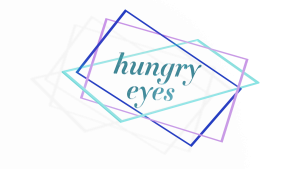festival 2022
26.08. - 28.08.2022
Pressestimmen zum hungry eyes festival 2023
“Es bot mit seinem breiten Spektrum vom Experiment bis zur filmgestützten Performance an drei Tagen eine fast unübersehbare, sprudelnde Vielfalt der Formen und Inhalte von ganz theoretisch bis ganz konkret: eine große Attraktion.” – Heiner Schulz (Gießener Anzeiger)
“Es ist […] dem Team gelungen, eine sehr anregende, intelligente und im positiven Sinn irritierende Mischung zusammenzustellen.“ – Christian Lugerth (Gießener Allgmeine Zeitung)
“Beeindruckend auch die Internationalität der Beiträge. Brasilien, der Iran, Kanada, Polen, Simbabwe, USA, Palästina, um nur einige der Herkunftsländer zu nennen. Überhaupt fiel auf, dass die Auswahl der Beiträge von einer starken Neugier auf Welt geprägt war, der Blick immer über den eigenen Tellerrand gerichtet war, dies wohltuend in einer Zeit, in der das Land um Tankrabatte, Duschzeiten und verlorene Gepäckstücke kreiselt.” – Christian Lugerth (Gießener Allgmeine Zeitung)
short film
As Long As There Is Bone There Is Language
Short film by Arit Emmanuela Etukudo
US 2021
„Diese Welt wird dich leeren, bevor du überhaupt weißt, dass du voll sein kannst. Bevor du weißt, dass du die Metamorphose erreichen kannst, wird sie dich deiner Alchemie berauben. Unter der Auslöschung unserer Wurzeln und an der Basis unserer Existenz liegt eine Frequenz, die die Geschichte unserer Magie und unseres Reichtums erzählt. Diese AfroFrequenz ignoriert den mechanischen Westen und ersetzt ihn durch die organische Spiritualität des afrikanischen Seins. Aber man lehrt uns, dass diese Essenz böse ist. Man lehrt uns, im Namen der verwestlichten Anmut, die Wurzeln unserer selbst zu fürchten.“
Arit Emmanuela Etukudo is a Nigerian-American Moving Image Installation Self-Portrait Artist whose practice deals with the fluidity and metamorphosis of Black identity. She earned her BA in Cinematic Arts from University of Maryland Baltimore county in 2016. She then earned her MFA in Fine Art from Nottingham Trent University in 2019. During her MFA, she took an Erasmus at École Supérieure des Beaux-Arts to expand her research.
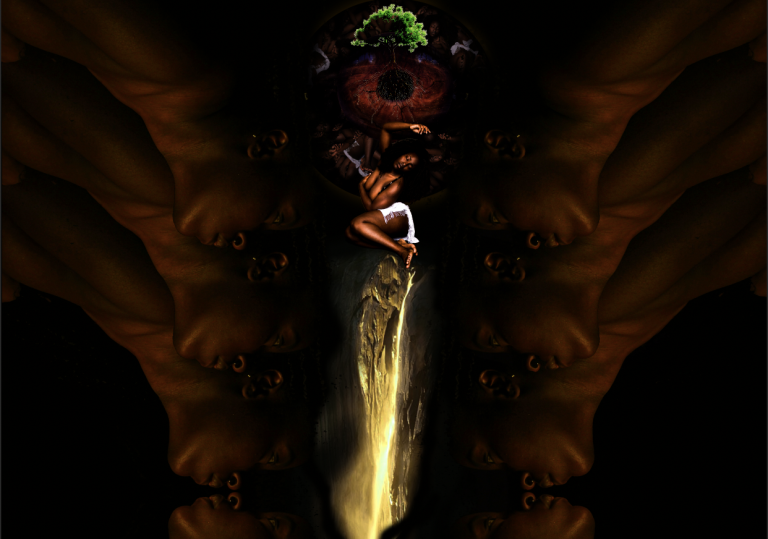
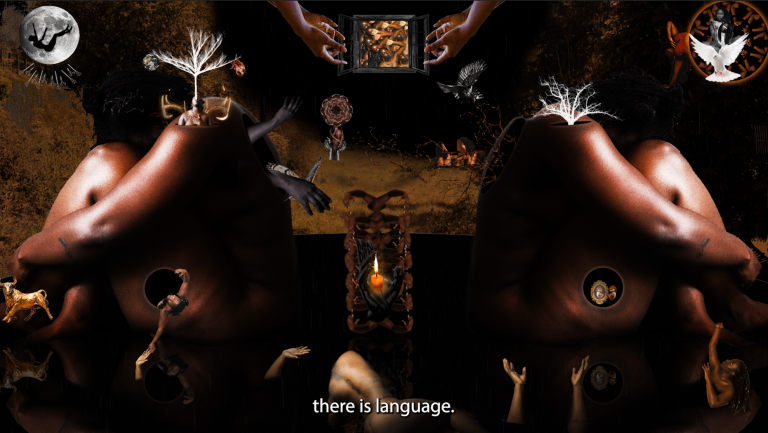
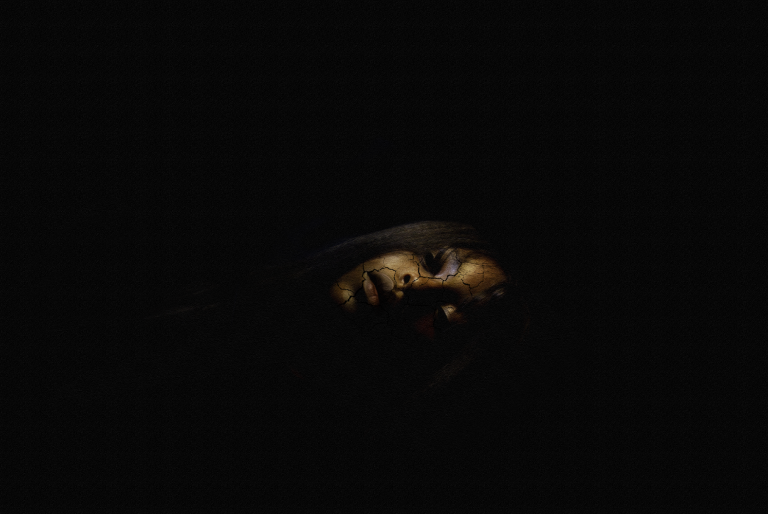
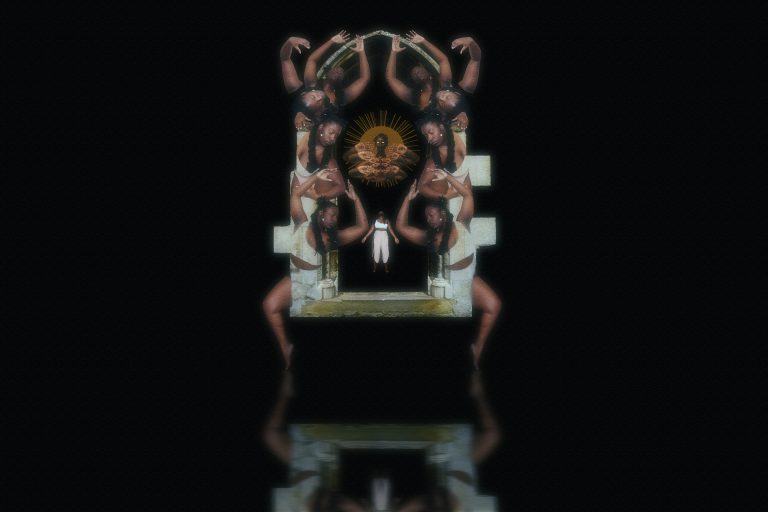
Screenplay, direction and editing: Arit Emmanuela Etukudo
Sound design: Lorenzo Diaz
Hair: Aggie Hair LLC
Production assistant:: Eli Diaz and Sandra Colon
Funded by Art Council England and BACKLIT Gallery, Foundation for Contemporary Arts Emergency Fund.
Possible trigger: flashing lights
hello!
Short film by Natalia del Mar Kašik, Antonia de la Luz Kašik
AT 2021
„hello! ist ein Film, der sich als Anleitung zu erfundenen Formen der Begrüßung präsentiert. Neue Wege, wie sich Menschen unter bestimmten Einschränkungen beim Zusammentreffen begrüßen können, werden entwickelt. Die Grußformen bewegen sich zwischen dem Ausführbaren, bis hin zum nicht Imitierbaren und schwer in den Alltag Integrierbaren. Der Film untersucht Formeln und Konventionen zwischenmenschlicher Begegnungen, versucht diese zu dekonstruieren und ins Absurde zu ziehen.“
Natalia del Mar Kašik* 1997, Graz. She attended the class for independent film and artistic photography at the Friedl Kubelka School and studies video and video installation at the Academy of Fine Arts in Vienna. In her artistic work she deals with femininity/identity and works with Super8.
Antonia de la Luz Kašik* 1993, Graz. Studied visual communication in Bolivia. Graduated from the Friedl Kubelka School for Independent Film in Vienna and studies video and video installation at the Academy of Fine Arts. She works with analogue film, animation, printmaking and photography, and as a cinematographer for film projects.
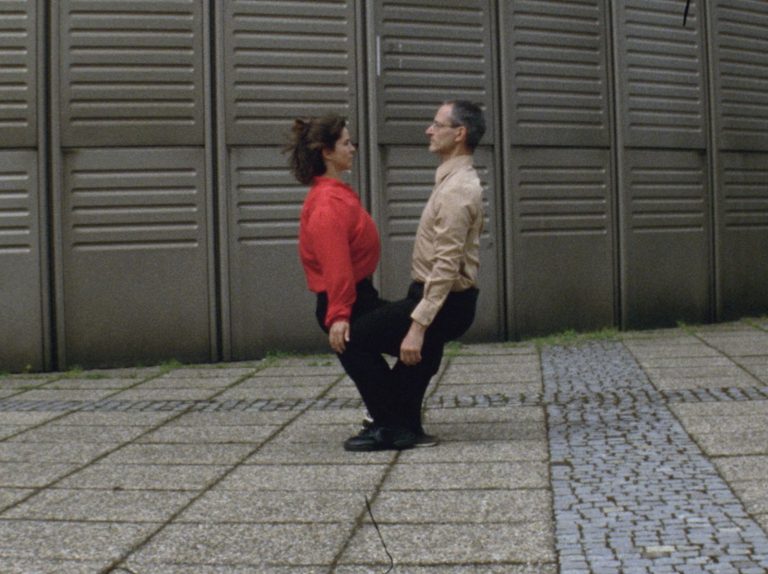
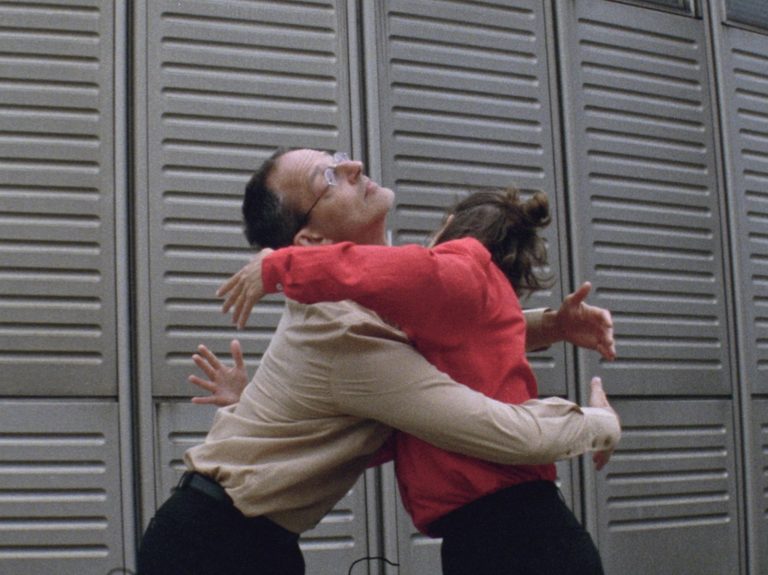
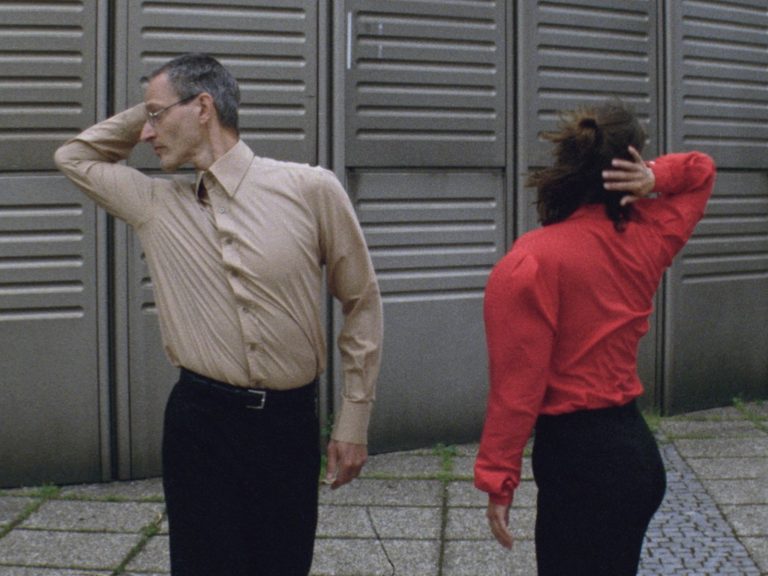
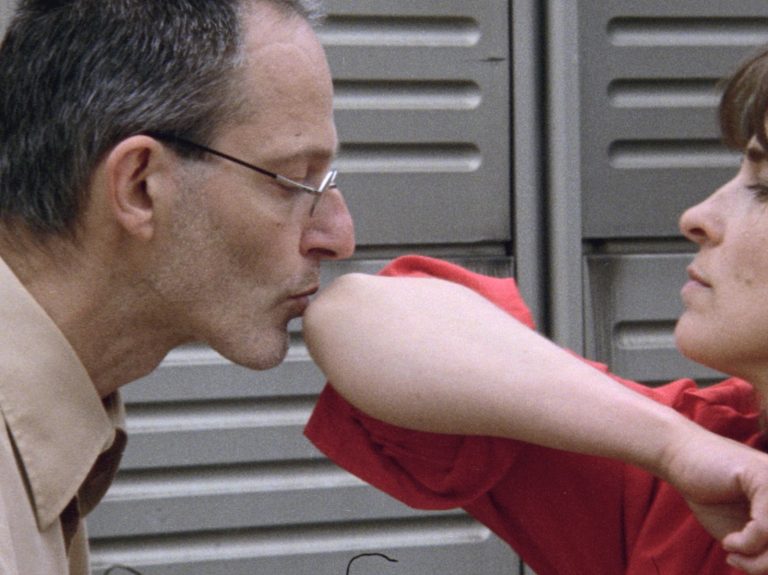
credits:
Antonia de la Luz Kašik
Natalia del Mar Kašik
Juli Gabor
Christian Neher
Hoamweh Lung (Homesick Lungs)
Short film by Felix Klee
DE 2021
„Ein totes Pferd kann man nicht zurückholen. Aber es gibt Möglichkeiten, einen verlorenen Ort wieder zu betreten. „Hoamweh Lung“ ist ein experimenteller Abschied. Der Film taucht in die Lungen eines sterbenden Pferdes und die Geschichte eines verkauften Familienhofs ein. 3D-Animationen, Bildschirmaufnahmen und dokumentarische Aufnahmen verbinden sich zu einem Essay über rekonstruierte Erinnerung. Am Ende streift der Wind durch virtuelle Brennnesseln.“
Felix Klee (*1990) studies directing for documentary film at the University of Television and Film Munich. For 2022 he received the twelve-month media art scholarship of the Kirch Foundation.
In 2016 he completed his studies in Digital Time-Based Media and Painting at the Academy of Fine Arts Munich.
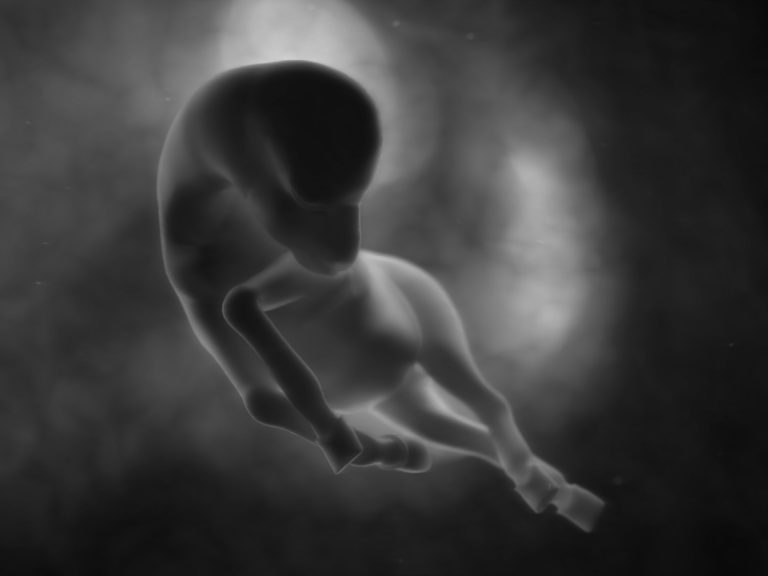
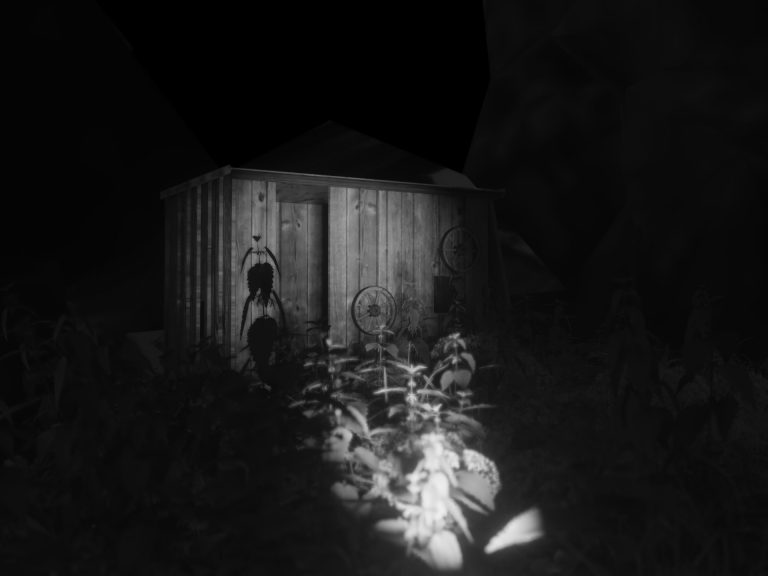
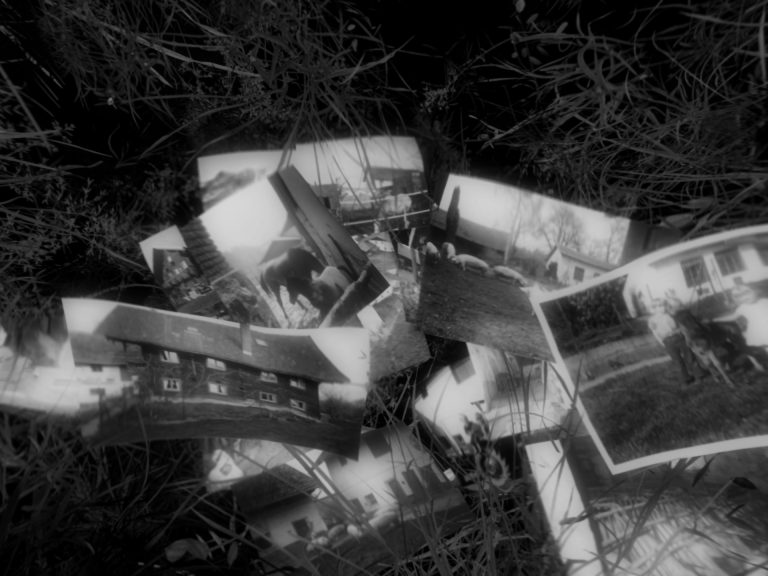
Director, Screenplay, Camera, Editing, Animation, VFX & Color Grading: Felix Klee
Sound Mixing: Stefan Möhl
Supported by HFF Munich
QUEERING DI TEKNOLOJIK
Short film by Timothy Smith
GB 2019
„QUEERING DI TEKNOLOJIK is a film by artist & academic Dr. Timothy Smith, created as part of his PhD research, in collaboration with So Mayer, Campbell X, Valentino Vecchietti and Teresa Cisneros. All of their voices contributed to the creation of the digital voice that narrates the work, delivering a message of hope from a queer utopian future.
Der Film feierte Premiere auf dem BFI London Film Festival 2019, wo er auch für den Preis für den besten Kurzfilm nominiert war. Desweiteren gewann der Film den George Manupelli Founder’s Spirit Award auf dem Ann Arbor Film Festival 2020 und den Best British Film Award auf dem Queer Visions Film Festival in Bristol UK 2020.“
Dr. Timothy Smith is a London-based academic and artist/filmmaker, creator of narrative short films such as Attack (2005) and Le Weekend (2007); and experimental non-narrative films such as Béton brut (2014), When we come to it (2015), A Queering of Memory: Parts 1&2 (2017), Queer Babel (2018) and Queering di Teknolojik (2019).
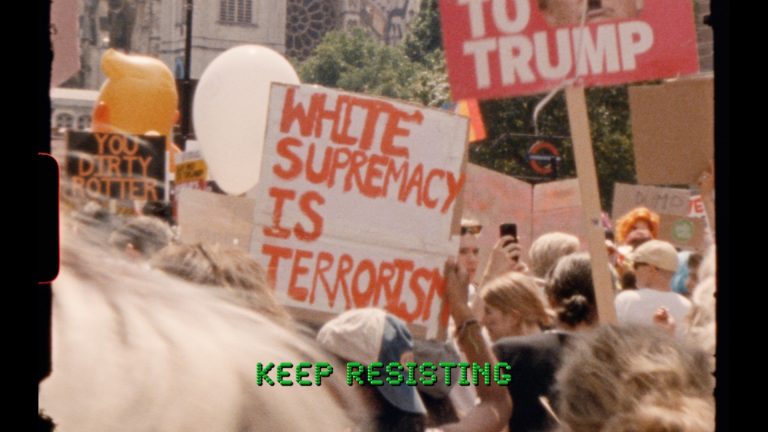
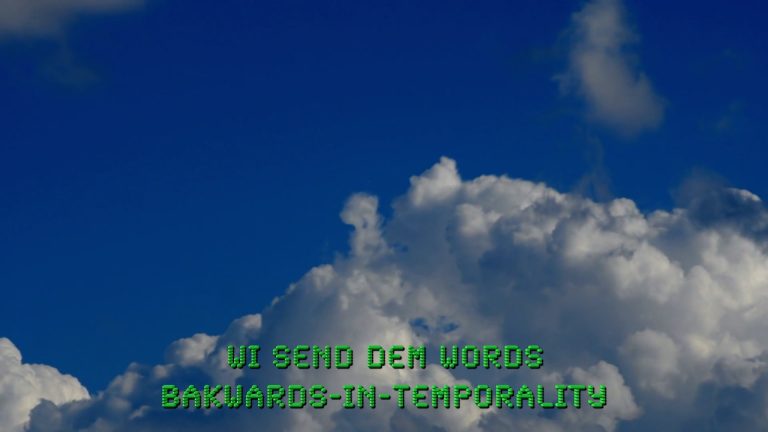
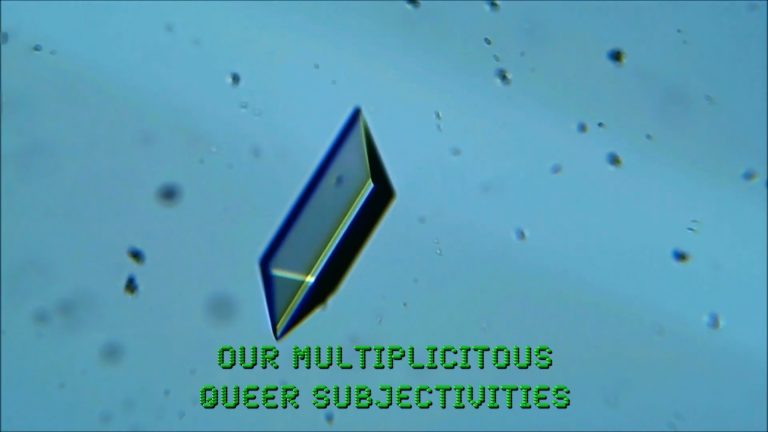
Director: Timothy Smith
Writers: Timothy Smith & So Mayer
Collective digital voice: Timothy Smith, So Mayer, Campbell X, Valentino Vecchietti and Teresa Cisneros.
Editing: Timothy Smith
Sites of Encounter, Act II
Short film by Mario Mu
SI 2021
„Sites of Encounter is the ongoing body of work that explores relations of contemporary labour conditions, gaming, and the human-built environments. As in the telling of a dream or related to memory, the atmosphere comes and goes, sifting through meticulously crafted layers of image sequences.
Während die Lautstärke der Stille, die sich hinter dominanten Erzählungen über Arbeitsbedingungen verbirgt, ständig erhöht und verringert wird, suggeriert die fabrizierte Landschaft eine behagliche Langeweile, die aus der Spannung zwischen Aktion und Stillstand, suggestiven rhythmischen Wiederholungen und schwereloser Perspektive entsteht.“
Mario Mu is a visual artist and director living in Berlin. His work has been shown in Research Center for Proxy Politics, TAP-Theatre auditorium de Poitiers; V2 Rotterdam; MGLC Ljubljana; MAAT Lisbon; Play Co London; Pakhuis de Zwijger in Amsterdam; Uferstudios and Silent Green in Berlin; MSU, Pogon and GMK in Zagreb, among others.
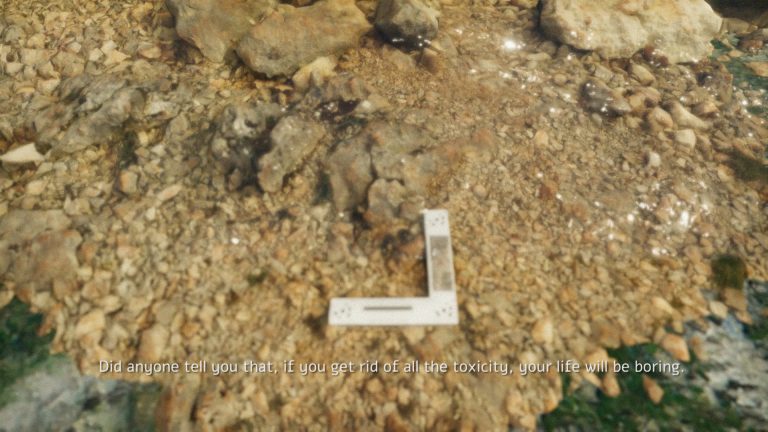
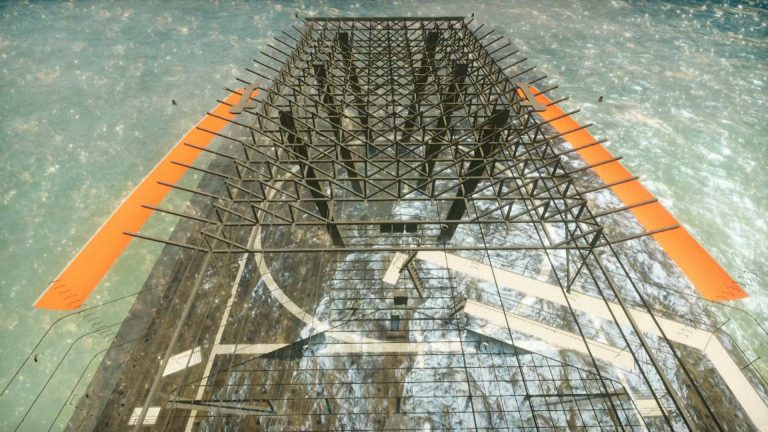
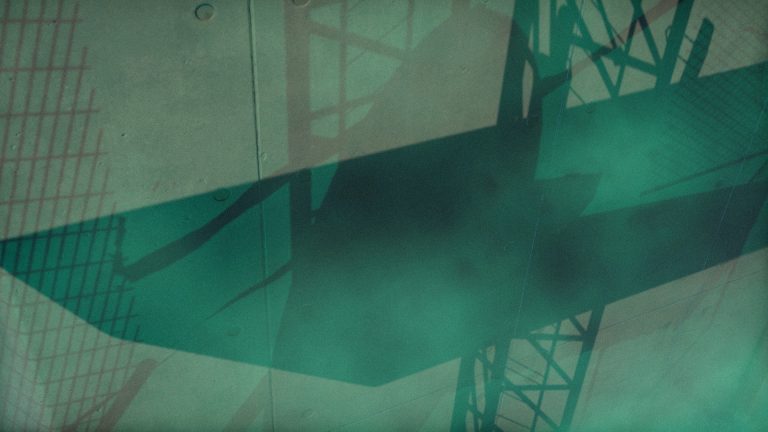
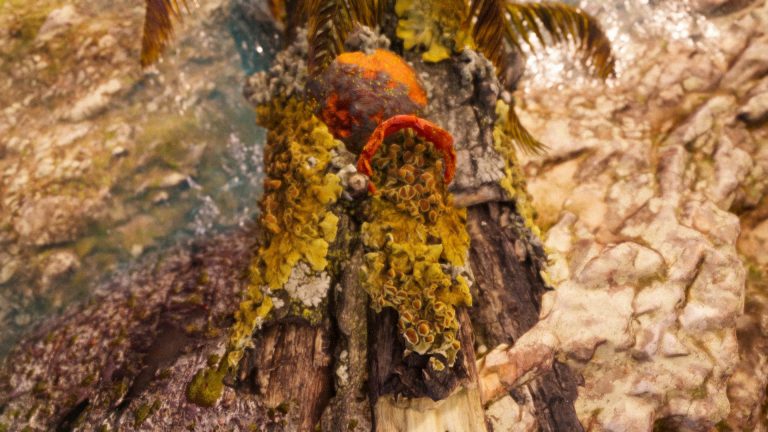
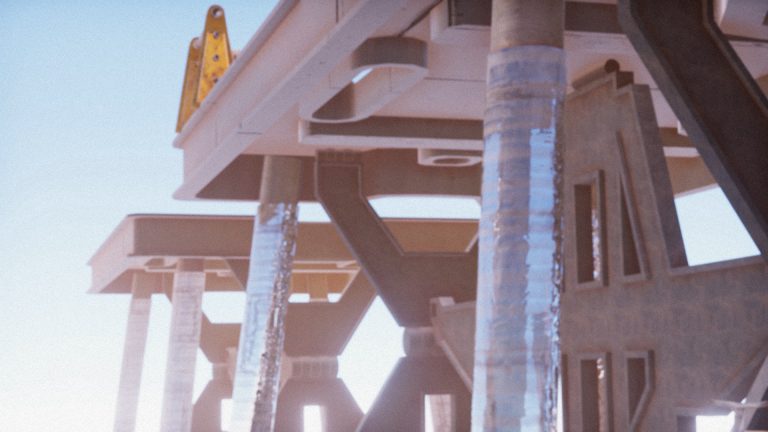
Author and director: Mario Mu
Slides – a letter to dance
Short film by Roni Katz
DE 2021
„Eine Choreografin lädt das Publikum ein, sich auf die Symbiose von Tanz in ihrer Vergangenheit und den politischen Realitäten ihrer Gegenwart einzulassen. Diese zutiefst persönliche Dekonstruktion der Choreografien, Hierarchien und Arbeitsbedingungen, die ihre Karriere beeinflusst haben, offenbart die Komplexität der Beziehung einer Tänzerin zum Tanz. Wie kann man etwas verkörpern, an das man selbst nur schwer glauben kann? Wie kann man sich einer Form widmen, die um Politik herum taumelt? Wie kann man sich von der Unterdrückung durch den Kanon und der Last des Blicks befreien? Trotz ihrer Frustration enthüllt die Art, wie sie sich bewegt, die Zuneigung zu dieser langfristigen Beziehung. Die Unentwirrbarkeit des Tanzes in ihrem Körper ist ebenso deutlich wie ihre Kraft, ihn aufzubrechen und neu zu lenken. Sie ist auf der Suche nach den Gründen, warum sie mit dem Tanzen begonnen hat und warum sie weiter tanzt.“
Roni Katz lives and works in Berlin as a choreographer, performer, dramaturge and curator. Through a steady practice of expanded choreography she is looking for the apt medium to manifest personal-political matters, sometimes finding the stage outside the stage. Roni is obsessed with politics of self-care (as warfare), love and power structures.
Noam Gorbat ist eine in Berlin lebende Videofilmerin und Cutterin. Sie arbeitet mit verschiedenen Künstler:innen und Kollektiven zusammen, unter anderem mit Florentina Holzinger, Ian Kaller, Gob Squad und Fehras Publishing Practices. Noam engagiert sich für die Vermittlung von Intersektionalität in visuellen Darstellungen in all ihrer Komplexität, Härte und Schönheit.
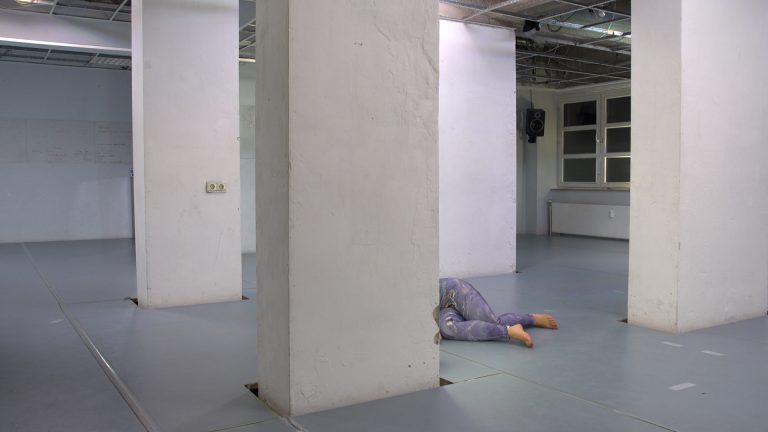
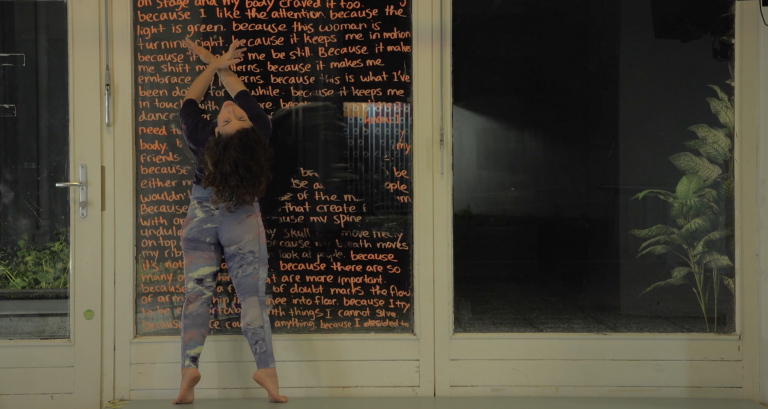
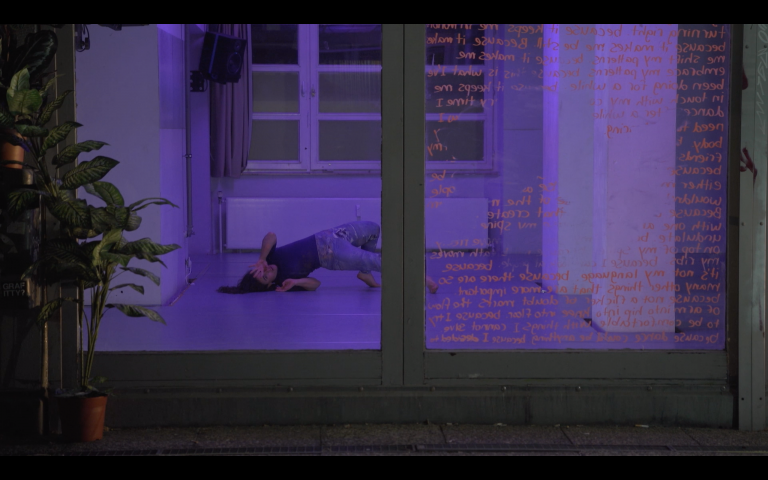
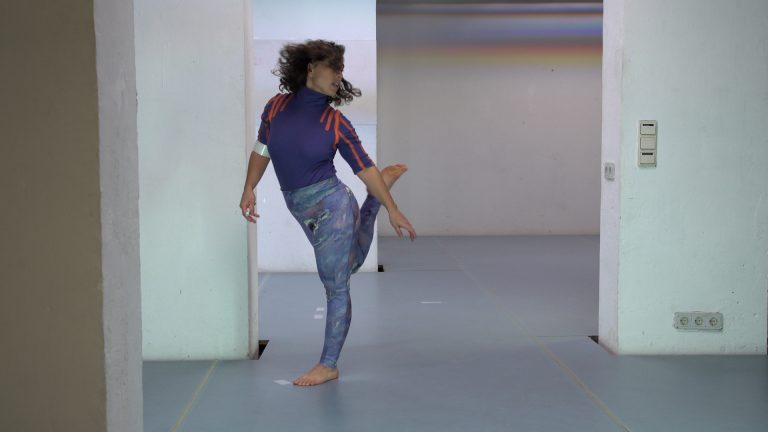
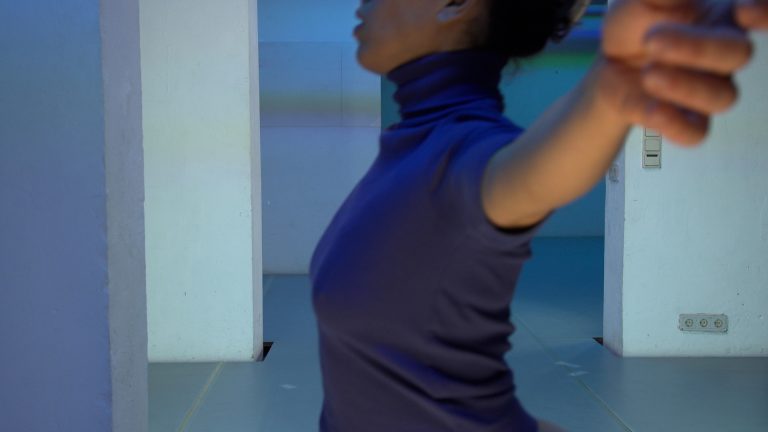
Dance and choreography: Roni Katz
Camera: Noam Gorbat
Editing: Noam Gorbat, Roni Katz
Light: Catalina Fernandez
Costumes: Daphna Munz
Voices: Rasha Nahas, Ariel Nil Levy, Alex Viteri, Dora Zygouri
Artistic advice: Litó Walkey
Sound Mixing: Manuela Schininà
Many thanks to Louise Trueheart, Laura Kirshenbaum, Zeina Hanna and Tamar Grosz
A production by Roni Katz, supported by Vierte Welt, Ada Studio Berlin, Deufert & Plischke
SOS/Animals/Action
Short film by Big Art Group
US 2021
„Mit SOS/Animals/Action continues and advances Big Art Group’s Real-Time Film technique, a conceptual model conflating performance, television and movies. Using live performance and video, Real-Time Film plays cinematic composition and controlled perspective against the verity of TV broadcast and the immediacy of live performance.
Big Art Group ist ein experimentelles Performance-Ensemble aus New York, das 1999 von Caden Manson und Jemma Nelson gegründet wurde. Die Big Art Group nutzt Sprache und Medien, um die formalen Grenzen von Theater, Film und bildender Kunst zu verschieben; sie schafft kulturell grenzüberschreitende Werke und innovative Performances unter Verwendung von Originaltext, Technik und experimentellen Kommunikationsmethoden.“
Caden Manson is a performance maker, curator, and educator. Through the company Big Art Group, their performance and media work create radical queer narrative structures and embodiments to construct and aid transitory generative critical space for participants and audience.
Big Art Group is a New York based experimental performance media ensemble founded by Caden Manson and Jemma Nelson in 1999. Big Art Group has been presented throughout 14 countries and over 50 cities in Europe, Asia, and North America.
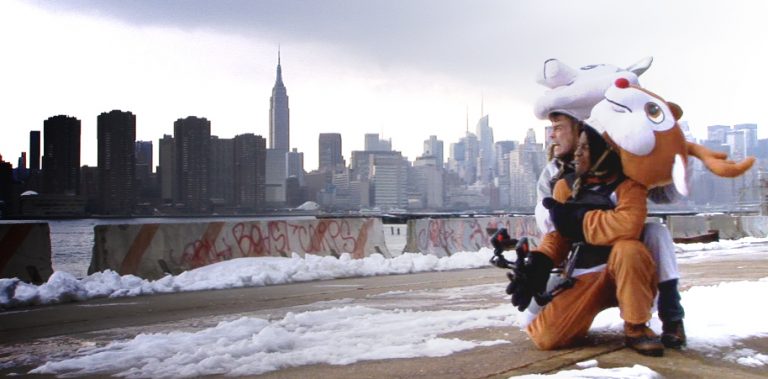
A work by: Caden Manson and Jemma Nelson
Directing, video-system and costumes: Caden Manson
Text and sound: Jemma Nelson
Performers: David Commander, Michael Helland, Willie Mullins and Edward Stresen-Reuter
Editing: Edward Stresen-Reuter
Production: Ana Mari de Quesada
Camera: Caden Manson, Kathleen Amshoff and Linsey Bostwick
Possible trigger: The film contains very loud noises, emotional distress, and simulated violence.
Swimming Lesson
Short film by Vardit Goldner
IL 2021
„Swimming Lesson ist eine Videoinstallation und ein Mockumentary-Film, in dem ich beduinischen Mädchen in einem wasserlosen „Pool“ das Schwimmen beibringe. Der Film soll zum Nachdenken darüber anregen, dass Beduin:innen in Israel kaum Zugang zu öffentlichen Schwimmbädern haben. Dies führt entsprechend zu einem Verwehren von Schwimmunterricht und häufig zu Fällen von Ertrinken.
In der israelischen Negev-Region leben heute mehr als 200.000 arabische Beduin:innen, die Zugang zu einem einzigen öffentlichen Schwimmbad haben, welches 2017 in der Stadt Rahat eingeweiht wurde. Beduin:innen ist der Zugang zu öffentlichen Schwimmbädern in jüdischen Ortschaften nicht gestattet.“
Vardit Goldner is a photography and video artist. She's engaged in documenting the Israeli-Palestinian conflict, mainly its effects on daily life of Palestinians, and addresses social issues. She studied at the Faculty of Arts – Hamidrasha at Beit Berl College, Israel, completing the Postgraduate Fine Arts Program, and holds an M.Sc. in physics.
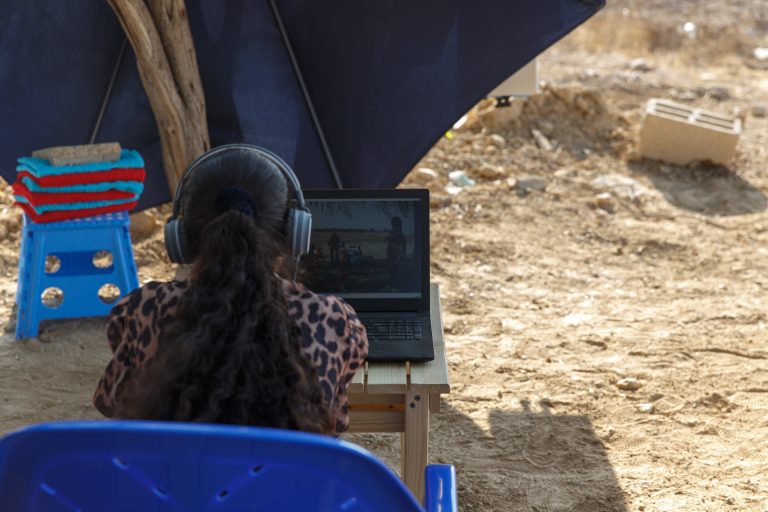
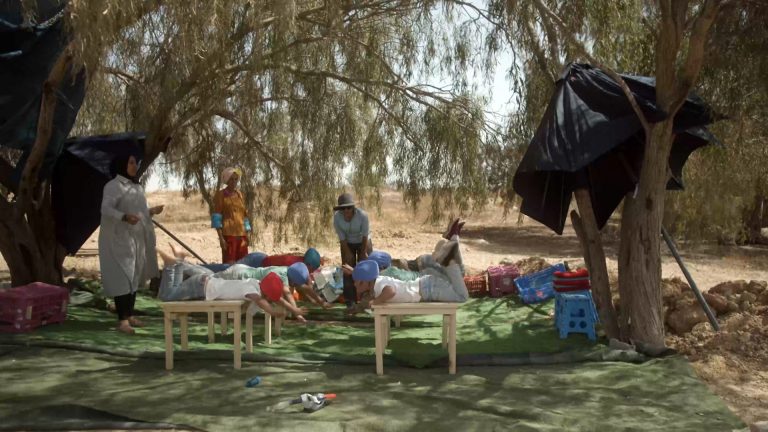
credits: Vardit Goldner
To wander so many miles in vain
Short film by Sacha Rey
FR 2021
„Eine „filmische Ballade“ im Herzen der Stadt Rio de Janeiro, in der Angelica De Paula ihr tägliches Leben während des ersten Lockdowns erzählt. Ihre Geschichte und ihre Lieder thematisieren Herrschafts- und Machtverhältnisse, die sich in Körpern materialisieren. Indem sie in ihren Liedern eine singuläre Erinnerung wiedergibt, schafft sie alternative Bilder zu der Gewalt, die sie erfährt. Durch ihre Entscheidung sich weiter zu bewegen, zu fühlen und zu teilen, stellt sie sicher, dass die Gesten von BIPOC-Frauen nicht noch einmal ausgelöscht oder unsichtbar gemacht werden. Mit dieser Form, die Sacha Rey „documentary dance“ nennt, reagiert Sacha Rey auf das Schweigen der „necro-liberalen“ Gesellschaft, die „opferbare Körper“ produziert und unsichtbar macht. (F. Vergés) Durch diese Methode versucht Sacha Rey, die physischen Erinnerungen der Protagonistin zu befragen.“
Sacha Rey is a visual artist, director and performer born in 1991 in Nice. They define themself as a non-binary, white, neurodivergent and queer person. Since 2016, they wear blue lipstick on a daily basis. Sacha Rey’s plastic research is informed by an intersectional and queer feminist perspective and based on a constant effort to shape intimate, political and poetic narratives that deal with systemic violence.
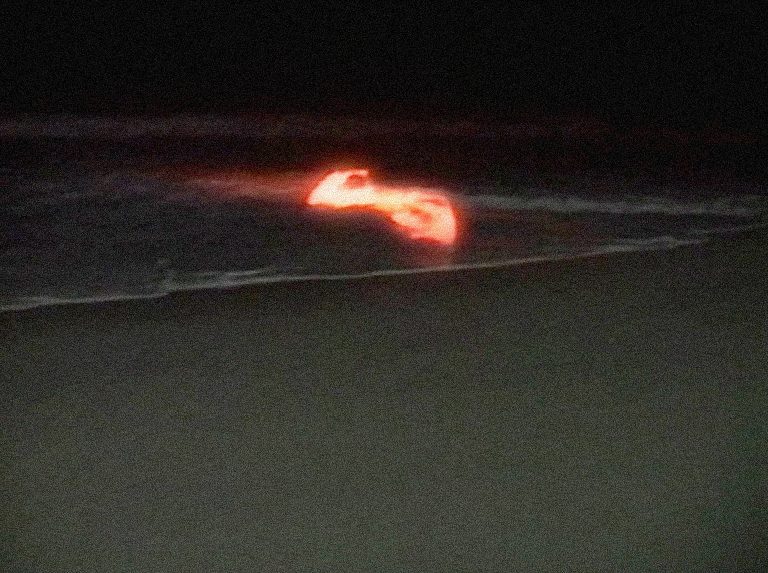
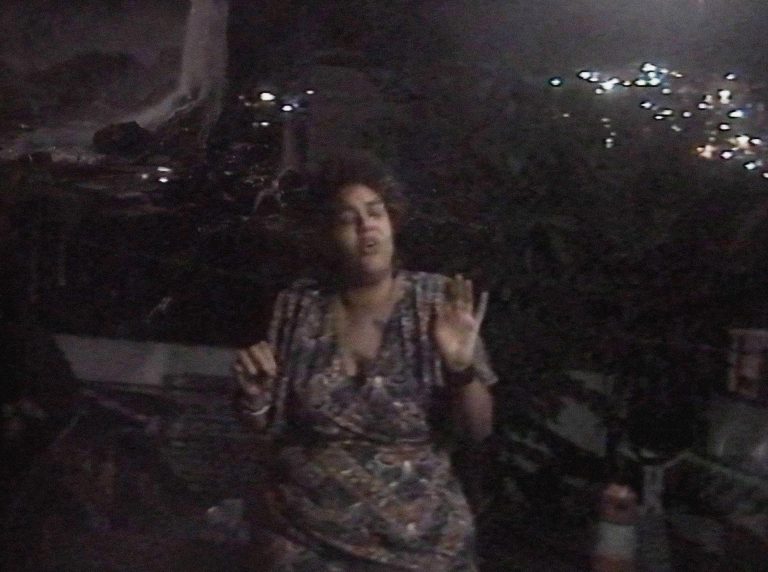
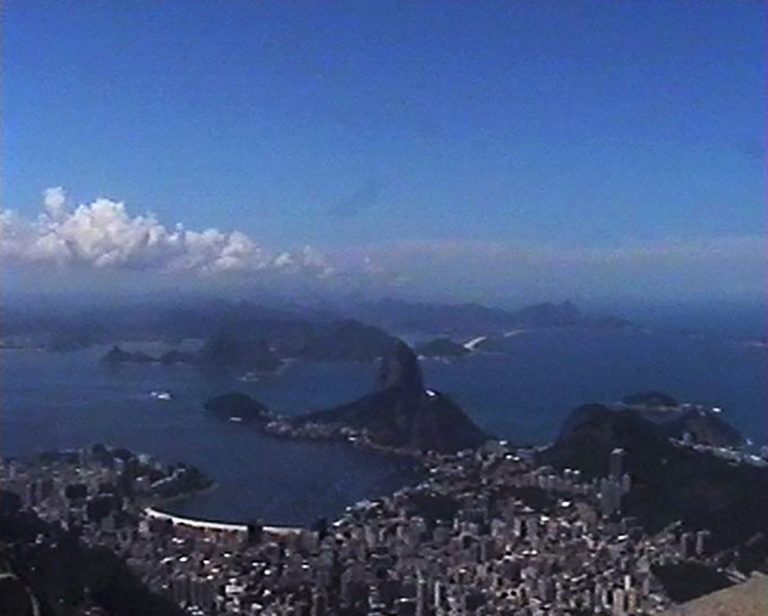
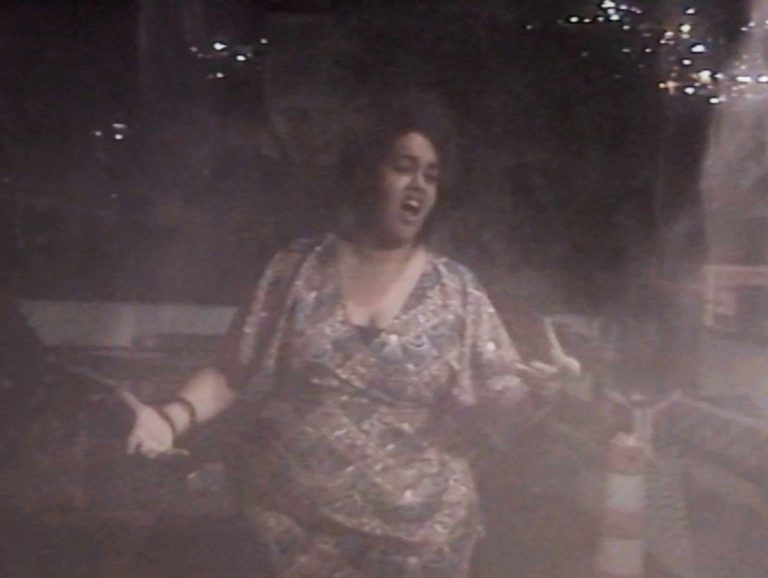
Directing, Camera, Sound and editing: Sacha Rey
Directors assistant: Lucas Levecchi
Film score composer: Angelica De Paula
Last song: “Fadas” by Luiz Melodia, performed by Angelica De Paula
Sound Mixing: Laurent Leblanc
Color grading: Adrien Von Nagel
Translation: Nanaui Amoros Silva, Lucas Levecchi, Daniel Pinheiro de Andrade
This short film was created as part of a master's thesis research under the direction of Cécile Boëx at l'ÉCOLE DES HAUTES ÉTUDES EN SCIENCES SOCIALES in the field of art, literature and language in Paris.
Possible trigger: This movie talks about systemic violences. TW : Feminicide, sexism, racism. There is a small "flash light" at 1min10 but it's not a strobe lights.
Töchter
Short film by Katharina Soon-Hi Thaler, Quynh Le Nguyen, Stella Deborah Traub
DE 2021
„Was bedeutet es, Tochter der eigenen Eltern zu sein?
Being the protagonists of their own film, three filmmakers ask themselves this particular question.
The setup: one camera, three settings and three encounters with at least one parent, discussing something so essential, it can hardly be put into words:
Mal schonungslos ehrlich, mal nach Worten suchend, tritt zutage, wie unterschiedlich die Eltern-Kind Beziehung erlebt werden kann und wie sie die individuellen Biographien beeinflusst. Im künstlichen Setting entstehen Gespräche über ein Familientrauma, über die Angst davor, einander zu fremd zu sein und die Gewissheit darüber, dass der Tod die Eltern-Kind Beziehung eines Tages beenden wird.“
Katharina Soon-Hi Thaler. Born in Munich in 1993. 2017 Bachelor in North American Studies at Ludwig-Maximilians-Universität Munich. Since 2017 freelance work in the BR television editorial department, culture section. Since 2018, study of documentary film and television journalism at the University of Television and Film Munich.
Quynh Le Nguyen. Born in 1995 in Soltau. 2018 Bachelor in Cultural Studies and Aesthetic Practice at the University of Hildesheim. Since 2018, study of Documentary Film and Television Journalism at the University of Television and Film Munich.
Stella Deborah Traub. Born 1997 in Öhringen. 2017 Diploma in TV Journalism at the Bavarian Academy for Television since 2018 study of Documentary Film at HFF Munich.
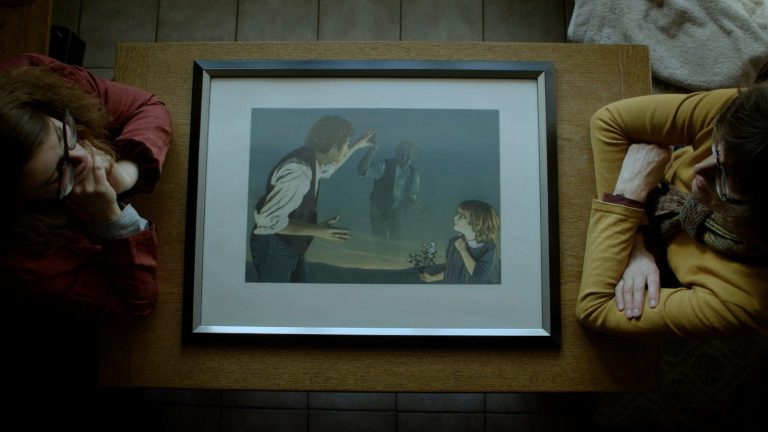
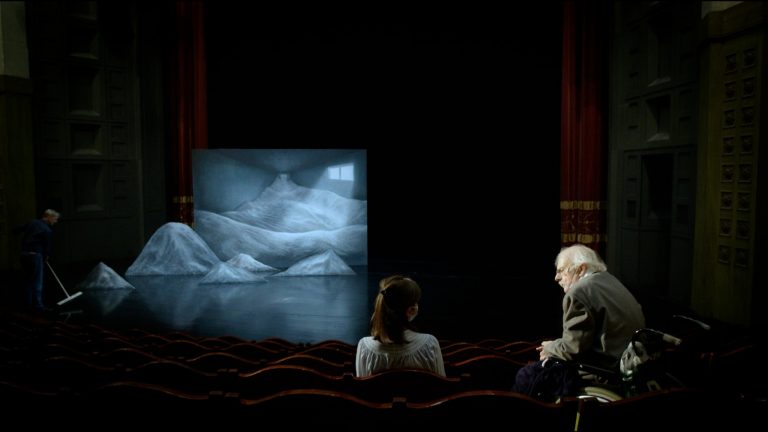
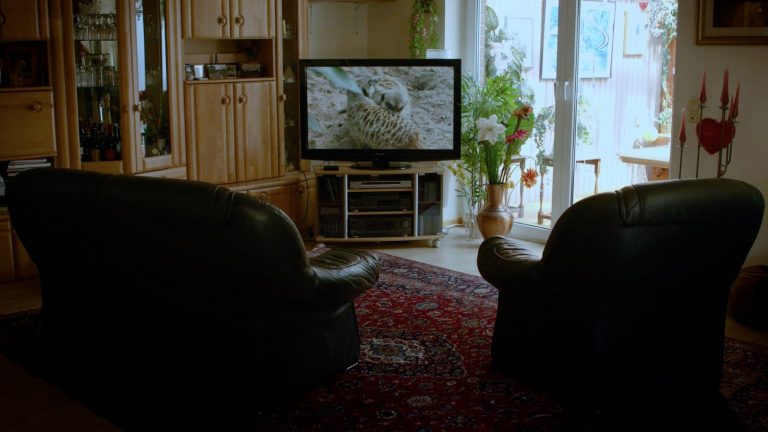
Director: Quynh Le Nguyen, Katharina Soon-Hi Thaler, Stella Deborah Traub
Camera: Jonas Kleinalstede
Producer: Marlon Hofmann
Editing: Narges Kalhor
Why the Birds?
Short film by Tomás de Souza
BE 2022
„Why the Birds? ist ein Kurzfilm, der aus Handybildern aus aller Welt entstanden ist und von einer sanften Obsession handelt: Vögeln. Immer um uns herum, übersehen wir sie oft. Aber manchmal tut sich eine Lücke auf.“
Tomás de Souza is a musician and artist, currently studying performance arts in Brussels.
Written, narrated and edited by: Tomás de Souza
Videos, Fotos und Ton aus der WhatsApp Gruppe „Pássaros“
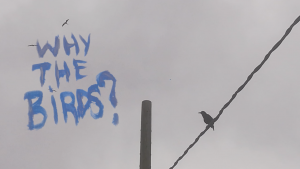
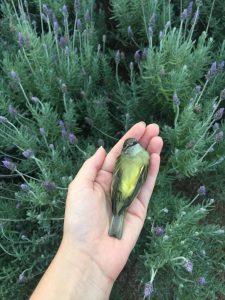
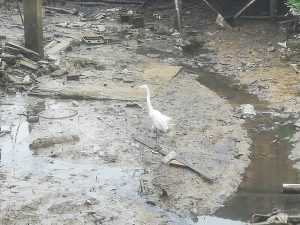
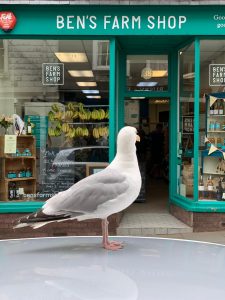
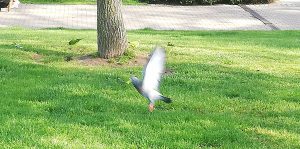
ZEHRA ON THE ROOF
Short film by Onur Agbaba, Najwa Ahmed
DE 2021
„Zehra wird aufgrund der Schließung der Fabrik nicht mehr gebraucht. Mit Mitte fünfzig, ohne Schulabschluss und ohne Ausbildung weiß sie nicht wohin ihr zukünftiger Weg sie führen wird. Sie reflektiert über die vergangenen 30 Jahre, was es bedeutet eine Gastarbeiterin zu sein, nicht mehr gebraucht zu werden und nicht erklären zu können, was die Schließung der Fabrik für sie bedeutet. Sie erinnert sich daran zurück, wie sie in ihrer Jugend getanzt hat und versucht mit diesem schönen Gefühl nach vorne zu blicken um das Vergangene dort zu lassen, wo es hingehört – in die Vergangenheit.
The short film ZEHRA ON THE ROOF ist im Rahmen des Filmworkshops AB-UND-ZU-GEHÖRIGKEITSANGELEGENHEITEN, organisiert durch bi´bak Berlin und un.thai.tled Filmkollektiv, entstanden.“
Najwa Ahmed (1989): Ein:e palästinensische:r Schriftsteller:in und Bildende:r Künstler:in, in Berlin lebend. In Najwa Ahmeds Theaterarbeit „not mine and other stories“ mit den KAAI-Studios in Brüssel setzte Najwa Ahmed sich mit Themen wie Vertreibung und ‘White Saviorism’ auseinander. In Najwa Ahmeds Kurzfilmen beschäftigte sich Najwa Ahmed mit queerer Identitätspolitik und der Konsumkultur von Körpern.
Onur Agbaba is a freelance theatre maker, performer and choreographer. He studied Applied Theatre Studies in Gießen and Dance&Choreography in Copenhagen. Between 2012 and 2014 he was a dancer in the company of Leipzig Dance Theatre under the direction of Alessio Trevisani. He lives and works in Berlin.
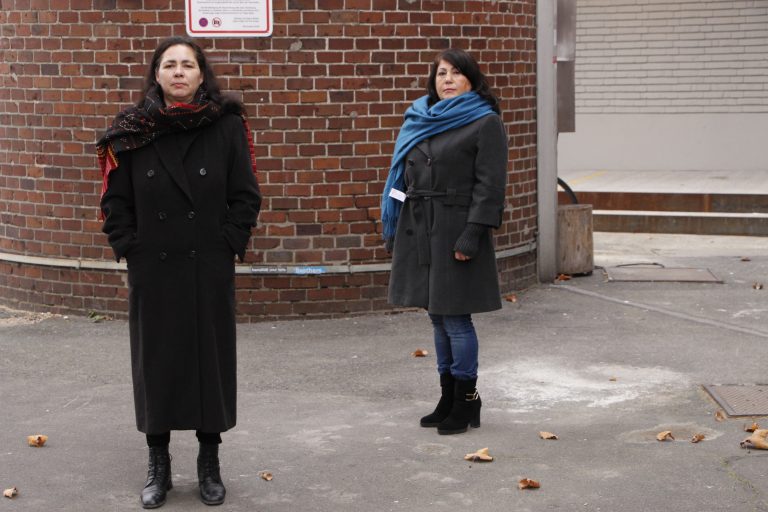
Screenplay and directing: Onur Agbaba and Najwa Ahmed
With: Michaela Behal, Nezahat Celayir
With materials by: Lumiere Brothers „Workers leaving the factory“, Archive 1895
Subtitles: Sarnt Utamachote
Camera: Onur Agbaba and Najwa Ahmed
Editing: Onur Agbaba, Najwa Ahmed and Sarnt Utamachote
Ukrainian Shorts
Eastern Ukrainian Dialogue
Ukrainian Short by Sashko Protyah, Oksana Kazmina
UA 2018
„Der Film untersucht die Probleme und Möglichkeiten des Aufbaus eines kulturellen Dialogs in ostukrainischen Städten. Das Filmteam analysiert die multikulturelle Geschichte der Region, die Schwierigkeiten bei der kulturellen Selbstverwirklichung und die Versuche, den Dialog effizienter zu gestalten. Der Film liefert keine präzisen Antworten, sondern versucht, Raum für eine unvoreingenommene Diskussion über die Kultur im Osten der Ukraine zu schaffen.“
Sashko Protyah – independent filmmaker, teacher, Zaporizhia/Mariupol
Oksana Kazmina – independent artist, filmmaker and educator, Syracuse/Kyiv
„Freefilmers“ sind eine cinematographische Bewegung und NGO. Ihre Hauptziele sind: Filme möglichst wachsam und sensibel für die Realität zu machen, Filme, deren Hauptfokus das menschliche Leben und der Kampf für Gleichheit und Freiheit ist. Die Förderung von unabhängigem Filmschaffen in der Ukraine, besonders der Ostukraine. Die Dezentralisierung des kulturellen Prozesses.
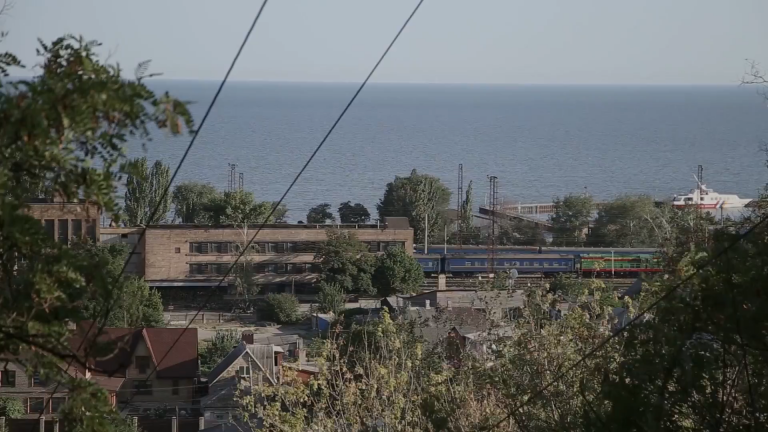
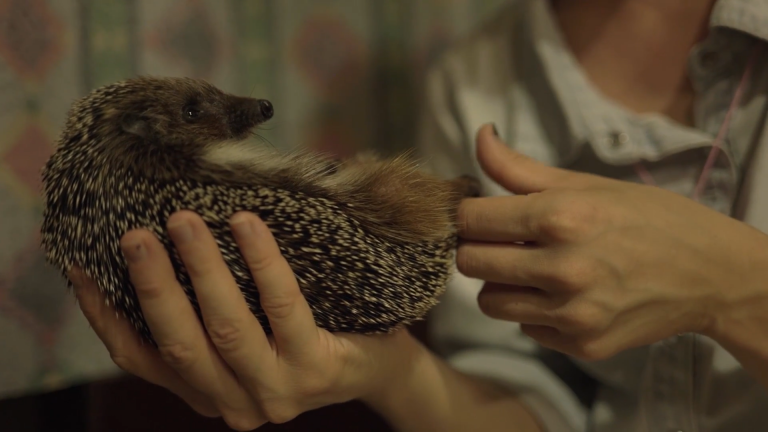
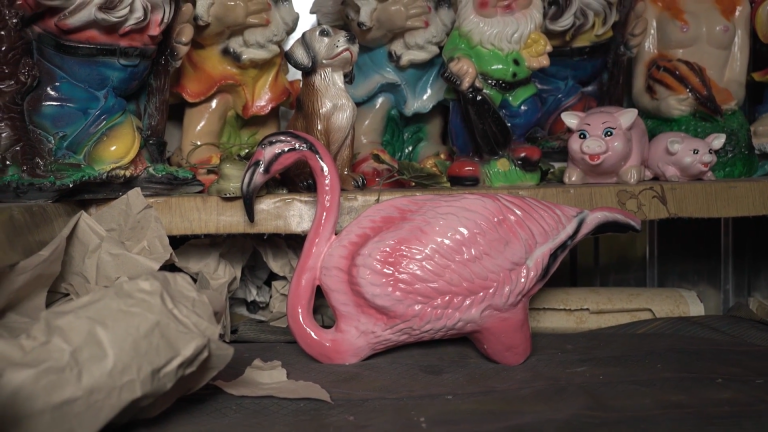
My Cosmos
Ukrainian Short by Natasha Tzeliuba, Yuliia Appen
UA 2019
„Die Regisseurin kehrt in ihre Heimatstadt zurück und erzählt die Geschichte ihres Erwachsenwerdens in Cosmos – einem Viertel in Zaporizhzhia. Sie versucht zu definieren, was Cosmos für sie bedeutet. Ist es ein autarkes Universum oder eine traumatische Erfahrung, ein Viertel oder eine Sensation?“
Natasha Tseliuba – artist, performer and curator, Cherkasy/Zaporizhia
Yuliia Appen – designer and photographer, Kyiv
„Freefilmers“ sind eine cinematographische Bewegung und NGO. Ihre Hauptziele sind: Filme möglichst wachsam und sensibel für die Realität zu machen, Filme, deren Hauptfokus das menschliche Leben und der Kampf für Gleichheit und Freiheit ist. Die Förderung von unabhängigem Filmschaffen in der Ukraine, besonders der Ostukraine. Die Dezentralisierung des kulturellen Prozesses.
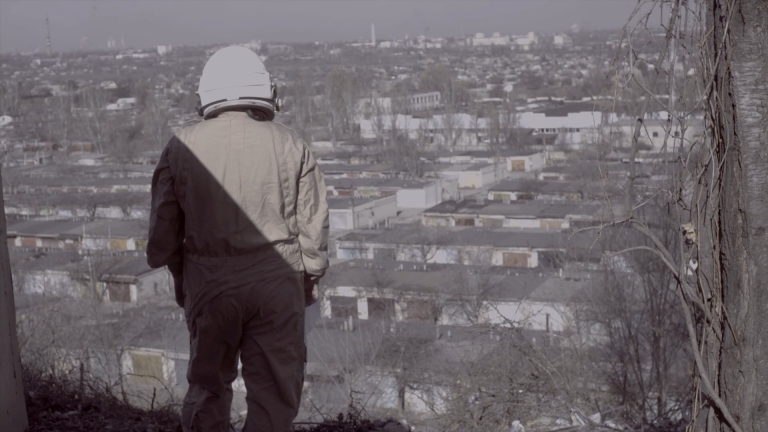
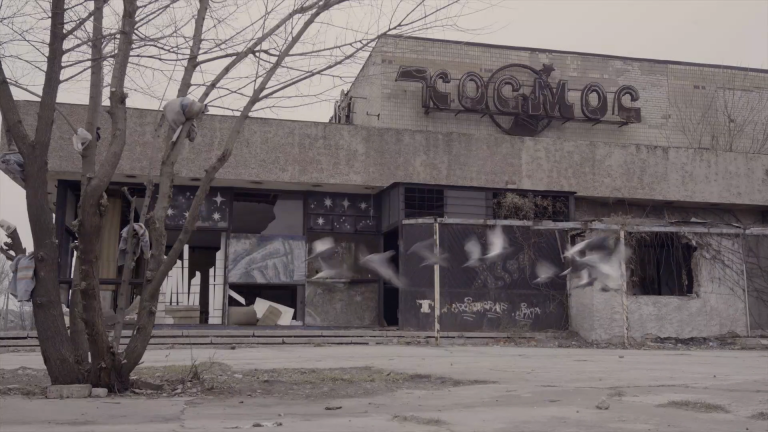
The Wonderful Years
Ukrainian Short by Svitlava Shymko, Galina Yarmanova
UA 2018
„Der Film erforscht das Leben von nicht-heterosexuellen Frauen in der Ukraine in der späten Sowjetunion. Er basiert auf Archivmaterial des Zentrums für Stadtgeschichte Mittelosteuropas in Lviv und Interviewausschnitten aus den Forschungsprojekten „Sexuality under Globalization“ (2005-2006), „Being a Lesbian in Ukraine: Gaining Power“ (2007) und „LGBT Families in Ukraine: Social Practices and Legislative Regulations“ (2011-2012).“
Svitlana Shymko – independent filmmaker, Berlin/Kyiv
Galina Yarmanova – independent researcher, Berlin/Kyiv
„Freefilmers“ sind eine cinematographische Bewegung und NGO. Ihre Hauptziele sind: Filme möglichst wachsam und sensibel für die Realität zu machen, Filme, deren Hauptfokus das menschliche Leben und der Kampf für Gleichheit und Freiheit ist. Die Förderung von unabhängigem Filmschaffen in der Ukraine, besonders der Ostukraine. Die Dezentralisierung des kulturellen Prozesses.
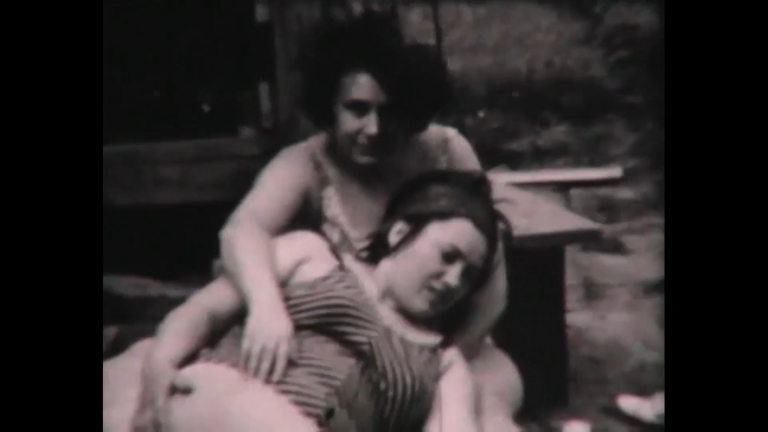
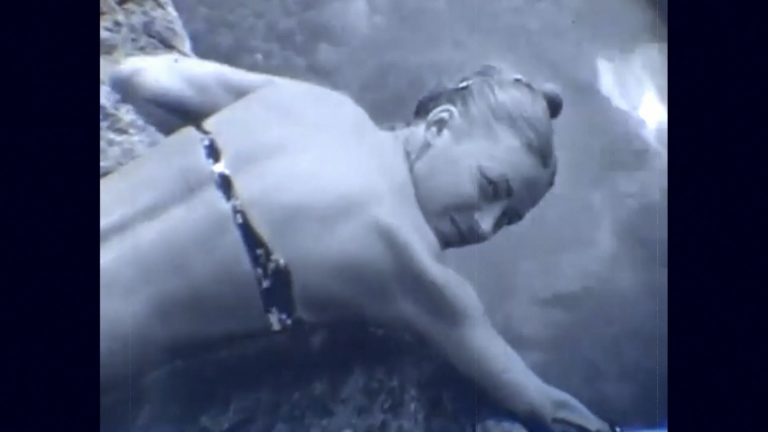
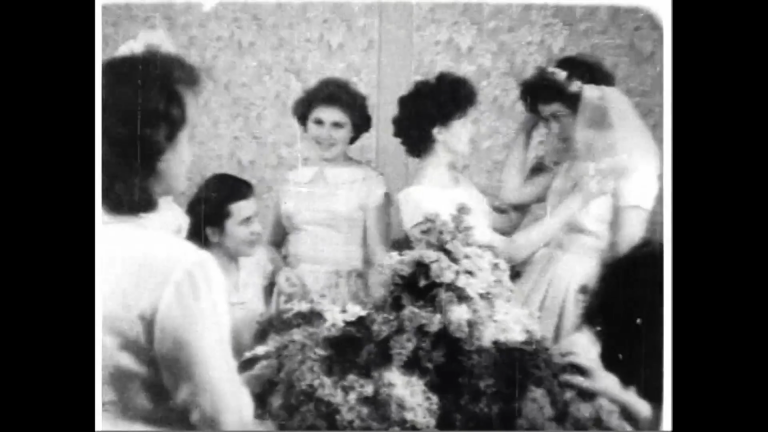
Хайт / Khayt
Ukrainian Short by Sashko Protyah
UA 2021
„Eine künstlerische Spekulation über die ukrainische Stadt Mariupol im Jahr 2068, in der die blühende städtische Kultur zu einem großen Teil von Asow-Griechen geschaffen wird.“
Sashko Protyah – independent filmmaker, teacher, Zaporizhia/Mariupol
„Freefilmers“ sind eine cinematographische Bewegung und NGO. Ihre Hauptziele sind: Filme möglichst wachsam und sensibel für die Realität zu machen, Filme, deren Hauptfokus das menschliche Leben und der Kampf für Gleichheit und Freiheit ist. Die Förderung von unabhängigem Filmschaffen in der Ukraine, besonders der Ostukraine. Die Dezentralisierung des kulturellen Prozesses.
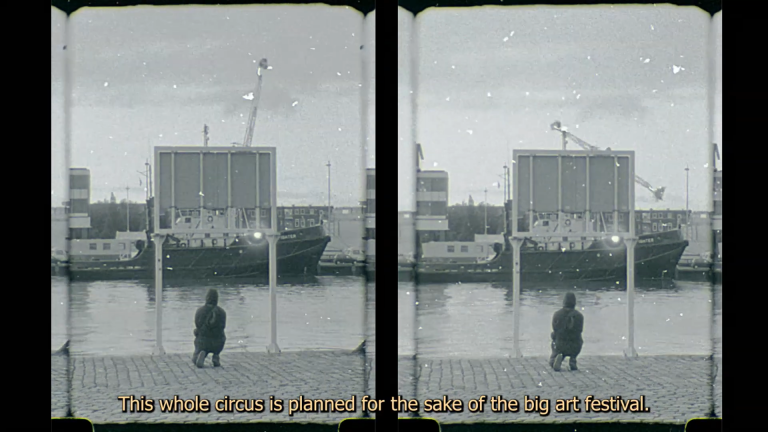
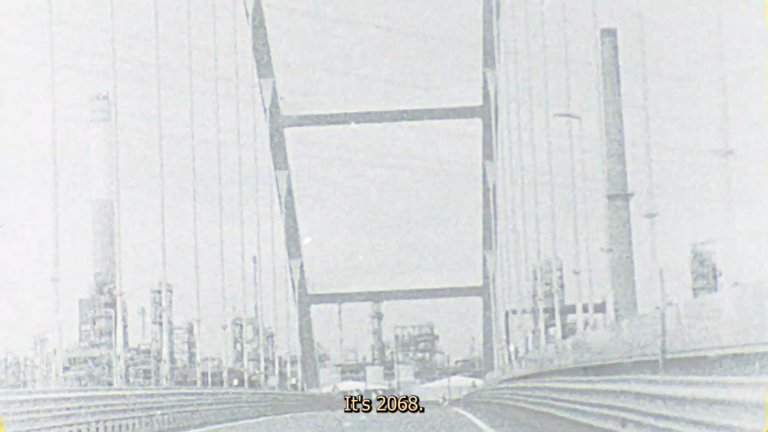
Short films in the Trash-Night
Benny Ballon
Short film in the Trash-Night by Simon Mende & Robin Goldbach
DE 2013
„Benny isst einen warmen Hefekuchen und bläht auf…“
Simon and Robin have known each other casually for a long time - but didn't like each other very much.
This changed due to an irrelevant event. But that was only after the film shoot.
Today Robin thinks Simon is okay. No, more. Great.
Or alternative: Robin and Simon have been best friends since birth.
credits: Simon Mende & Robin Goldbach
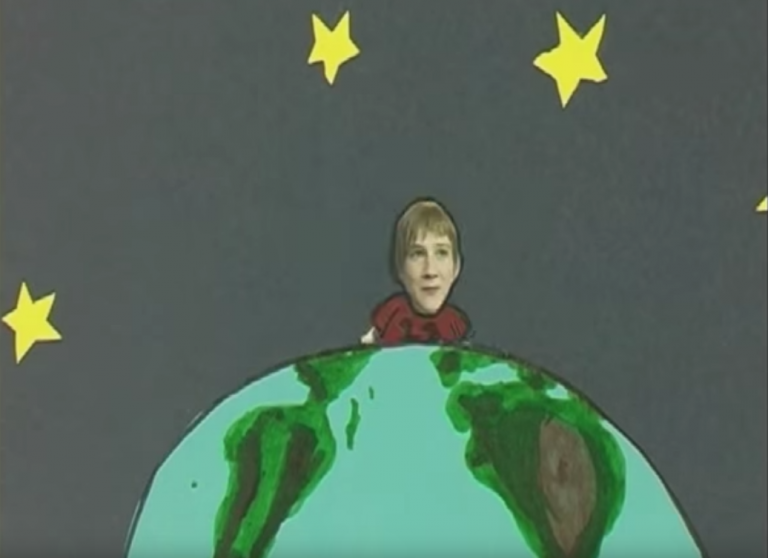
Intuition Money Love
Short film in the Trash-Night by Klara Kirsch
DE 2021
„Fit By Stacy begann 2019 als ins Absurde gedrehte Fitness-Tutorial. Seither hat sich die Arbeit mit dem fingierten Charakter Stacy zu einem Langzeitprojekt entwickelt, das durch die Aneignung von Social Media Ästhetiken Fragen zu Identität, weiblichen Rollenbildern und popkulturellen Phänomenen untersucht und mittlerweile mehrere Videoarbeiten, einen Instagram-Kanal und Merchandise umfasst. In Intuition Money Love reflektiert Stacy ihre spirituelle Reise durch instabile Zeiten. Computergenerierte Wolken werden dabei zu ihren Gefährten. Während sie durch die wüstenartigen Sphären ihrer virtuellen Welt schwebt, bleiben Hintergründe und Kontext ihrer neu erlernten Praktiken unbestimmt. Ihre Erkenntnisse und Affirmationen werden zu Werbebotschaften. Ihre Sinnsuche wird zum Heilsversprechen.“
Klara Kirsch (*1995) is a performance and media artist whose work deals with bodies and (multiple) identities in digital space, with the construction of reality and the mechanisms of post-capitalist society. She uses the appropriation of strategies from pop culture and social media as a method.
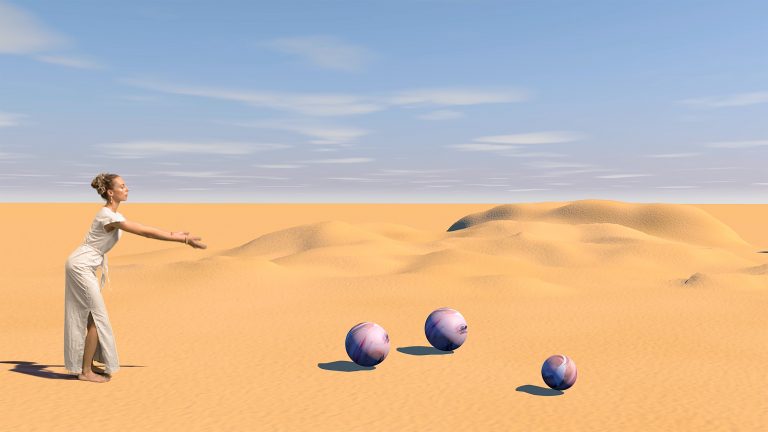
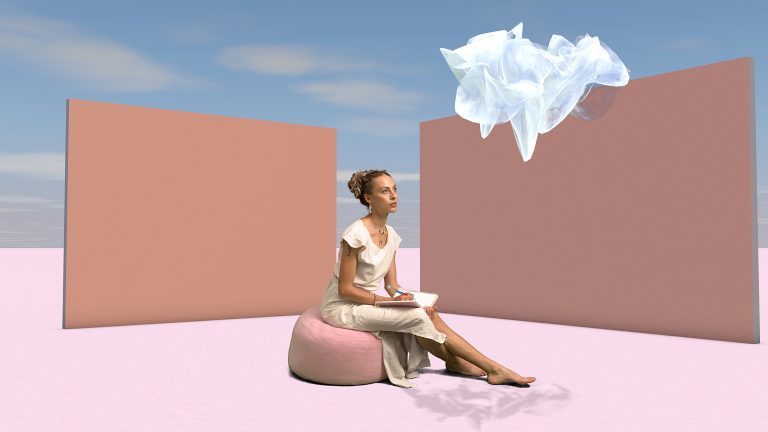
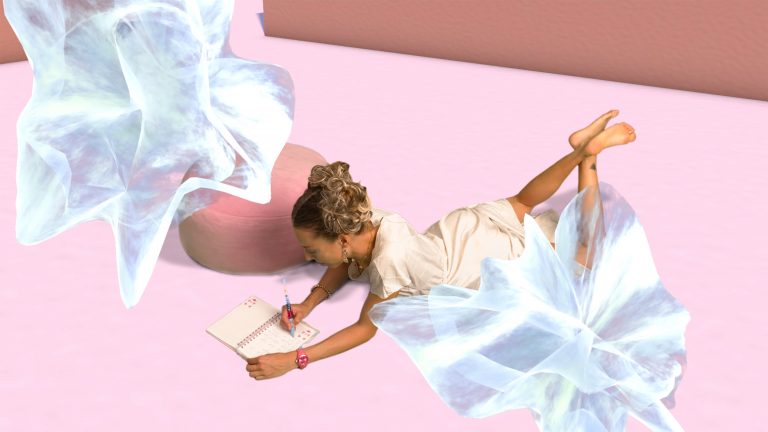
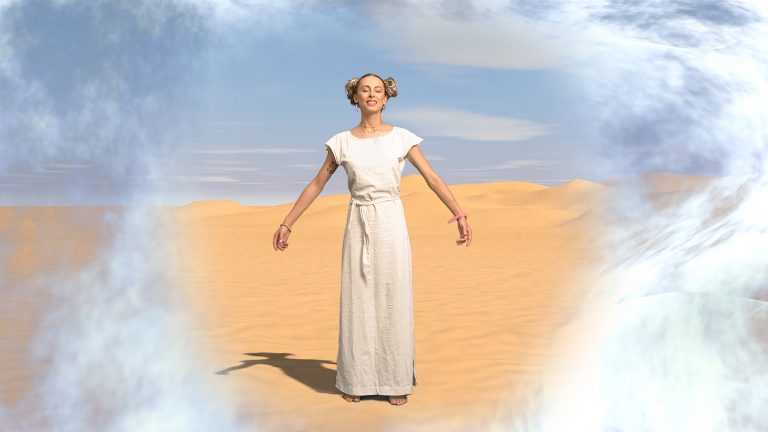
Concept, production, performance, 3D-animations: Klara Kirsch
Kapriolen im Buero
Short film in the Trash-Night by Vera Sebert
DE/AT 2022
„Der Bueroalltag ist voller Tücken und verstrickt die Protagonisten im Dickicht der gefundenen Bilder und Töne.“
Vera Sebert *1987
Artistic works in the liminal areas of visual media, language, film, computer programmes: The program code allows the adaptation of all other media, whose characteristics are imitated, fragmented and reassembled in virtual space.
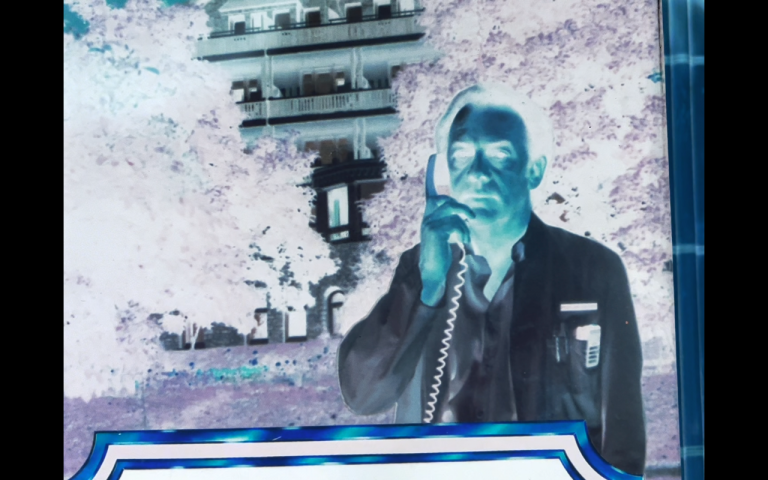
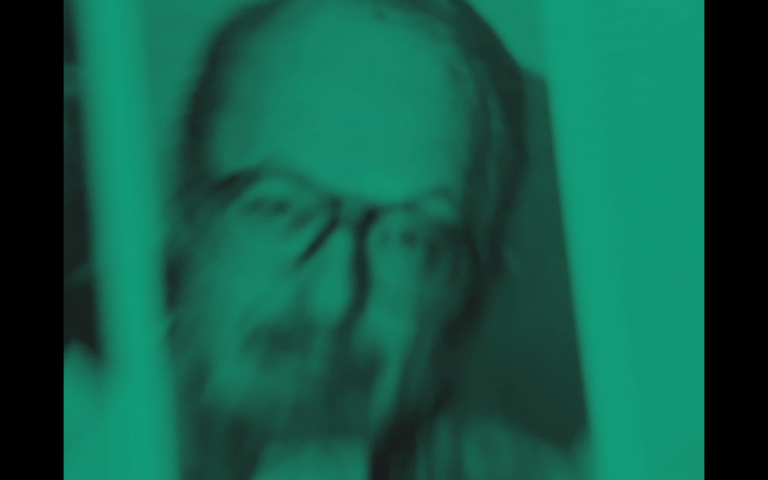
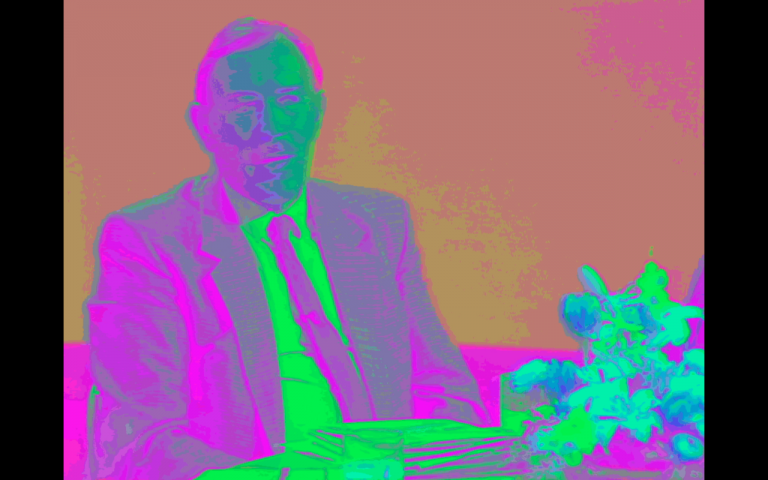
Idea and execution: Vera Sebert / Elisabeth Pfeiffer
Some Ginger for Art
Short film in the Trash-Night by Natalia Monakhova
RU 2021
„Ideale Kunst ist Kunst, die es nicht gibt. Ich bin immer noch eine Künstlerin, auch wenn es dem gesunden Menschenverstand widerspricht. Meine Kunstpraktiken schwanken zwischen Reduktion und Exzessivität. „Some Ginger for Art“ thematisiert Kunst als geistloses, gnadenloses, aber genussvolles Ritual.“
Multimedia artist, founder & co-curator of the International Bad Video Art Festival. Uses art practices as means for communication and play, addresses issues of quality in art, doubts that art can be judged as good or bad, explores the role of art as one of the most useless occupations today, and the role of the artist as a self-exploiting actor.
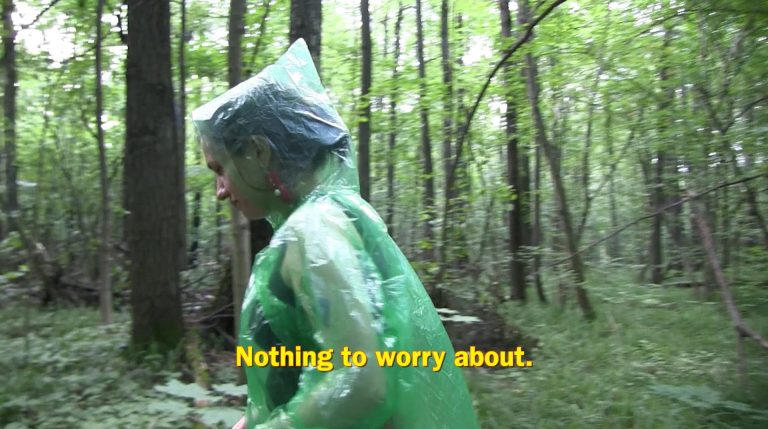
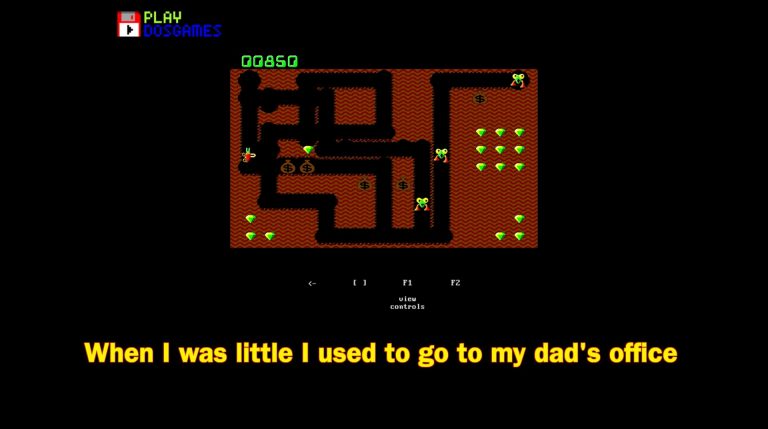
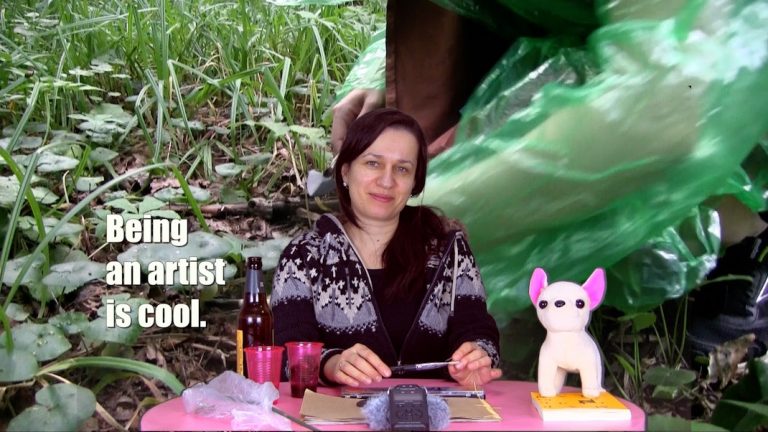
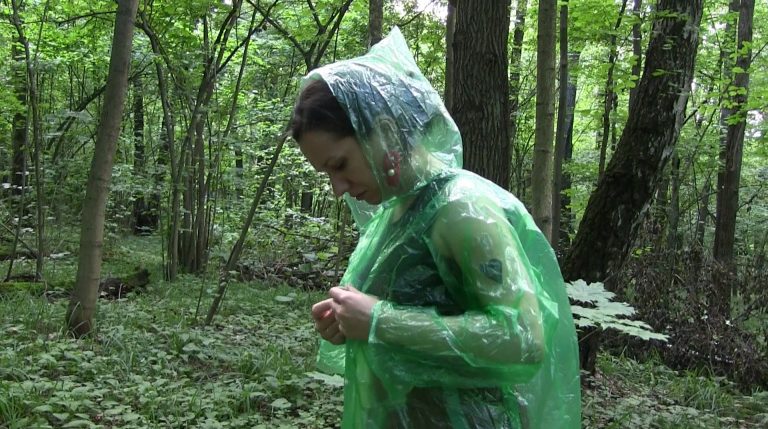
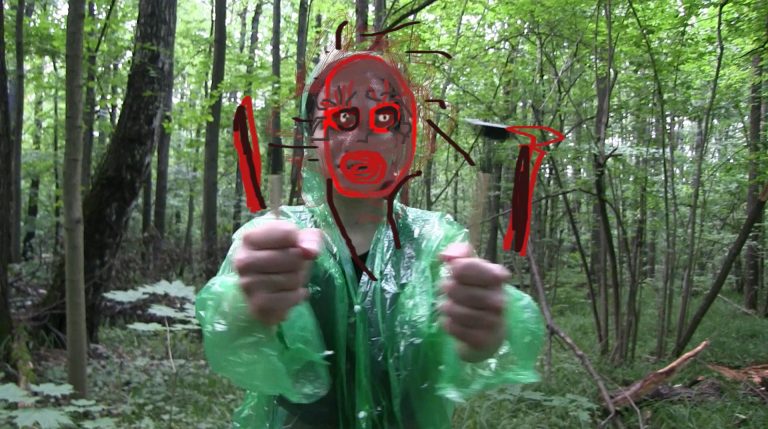
Video: Natalia Monakhova
Sound: Andrey Slaschilin
TEAM TSCHECHOW
Short film in the Trash-Night by Amelie von Godin
DE 2020
„Im Kurzfilm TEAM TSCHECHOW scheitern Chistin Nichols, Wilson Gonzalez, Stephanie Ballantine und Amelie von Godin leidenschaftlich an einer Szene aus ‚Drei Schwestern‘ von Anton Tschechow. Barbie Trash meets Bühnenrealismus. Auf gewisse Weise kann Tschechows Drama als „Endzeitstück“ gelesen werden. Wird es deswegen in Schauspielschulen und Stadttheatern hoch und runter gespielt? Im 4. Akt hat Irina beschlossen Tusenbach zu heiraten, obwohl sie ihn nicht liebt. Sie sieht darin ihre einzige Möglichkeit die Provinz zu verlassen. Am Vorabend der Szene provoziert ein Liebhaber Tusenbach und fordert ihn zum Duell. Er will hören dass sie ihn liebt, will von ihr aufgehalten werden und weiß doch dass sie es nicht tun wird. Der Versuch einer Aussöhnung mit Figuren und Material.“
Amelie von Godin found her way to theater somewhere between Antifa and P1. From 2016-2020 she studied physical theater at Folkwang UdK. Her solo ATOLL HURAWALHI had numerous guest performances. Since 2020 she is part of the multinational Finsterbusch Performance Collective. Since October 2020 she has been studying directing at HfS Ernst Busch.
Christin Nichols is a star. She plays a leading role in the ARD series "All You Need". As a musician she has toured with her former band "Prada Meinhoff" with DAF, Mia, Peaches and many more. On her own, Christin has already released several singles and was remixed by Westbam. She lives with her turtles in Berlin.
Stephanie Ballantine (sie/ihr). Nachdem sie sich von der Theater- und Schauspielpraxis gelöst hatte, studierte sie Politik und Philosophie. Ihre Themen: Sexualität als Handelsware, Bio Politics, politische Kontrolle… Sie verwendet Ausdrucksformen wie Hybridität, ‚Anti-Kuration‘, Kollaboration, Queerness, Intersektionalität.
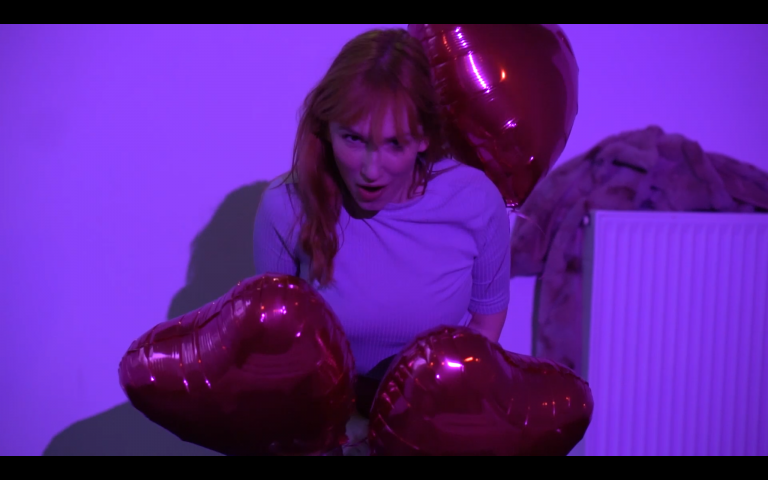
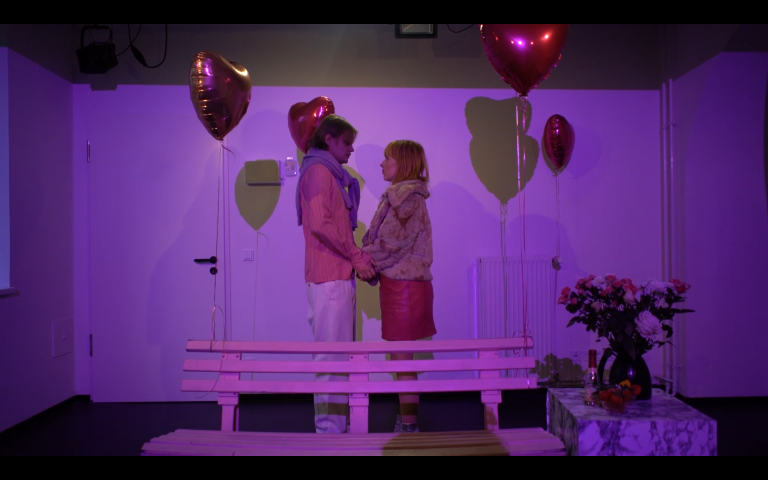
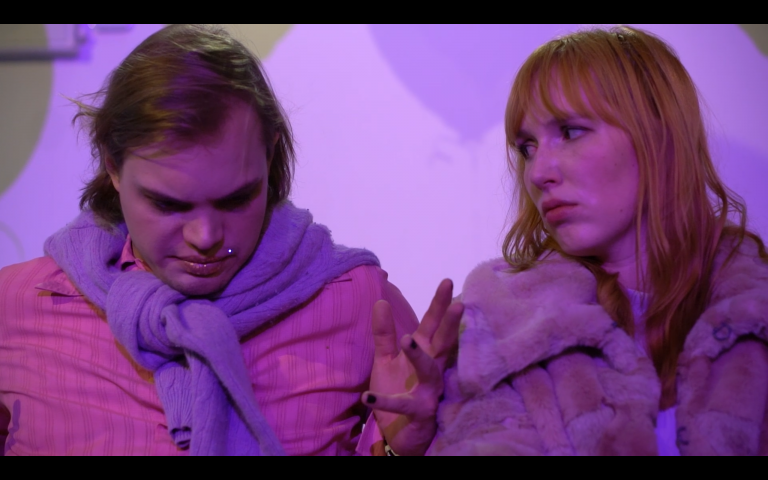
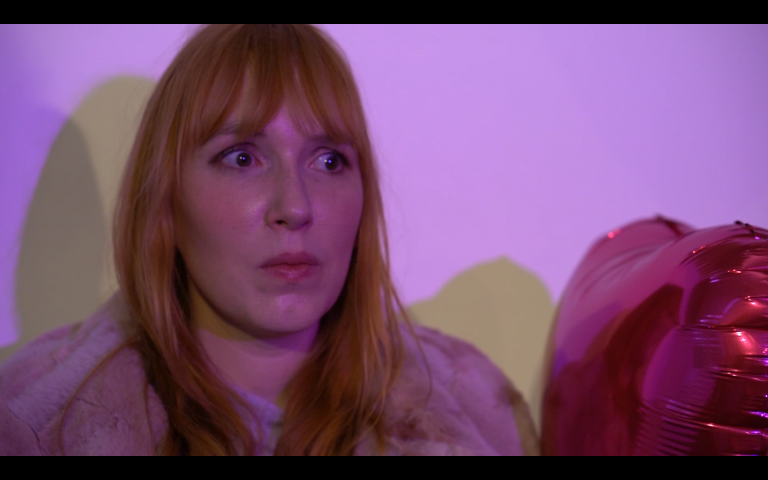
DIRECTOR Amelie von Godin
WITH Christin Nichols, Wilson Gonzalez
CAMERA Stephanie Ballantine
EDITING Amelie von Godin
MUSIK: „Believe“ – Cher, „Only time“ – Enya
VERZEICHNIS VON WÖRTERN
Short film in the Trash-Night by ULRICHSundGROSCHEN
DE 2021
„„Gentrifizierung“ hat eine Bedeutung, die zwar nicht so leicht zu erklären ist, aber doch meist bei dem Gefühl von Wut und Hoffnungslosigkeit endet. Um der Hoffnungslosigkeit etwas entgegenzusetzen, bleibt VERZEICHNIS VON WÖRTERN deals with the things (in this case: words) that are a little bit more easy to explain. In fact, with small words that mean something. VERZEICHNIS VON WÖRTERN ist ein Wörterbuch. Wenn ein Wörterbuch ein Essay-Film und nicht zu gebrauchen (aber zu genießen) wäre. Im Dickicht der immer weiter gentrifizierten Städte versucht der Film klitzekleine Wörter wie JA oder HALLO mit Bedeutung zu beschmieren und steht sich selbst im Weg.“
ULRICHSundGROSCHEN is a literature collective founded in 2021, consisting of K. Grosch and E. Ch. Ulrich, collectivized by the desire for experimental writing. Their educations (theater directing, literature studies, linguistics.) confuse, love and cross-fertilise each other. This is how, for example, plays are created, most recently at Berliner Ringtheater.
Linda Beton‘s real name is Linda Blümchen and she was born in Berlin, where she studied acting with Franziskus Claus at the University of the Arts. During her studies she received a scholarship from the German National Academic Foundation and began working at Theater Basel. Since 2020 she has been living in Munich and acting at Residenztheater.
Franziskus Claus was born in Lutherstadt Wittenberg in 1994 and grew up in the Harz Mountains and Potsdam. Before studying acting at the UdK Berlin, he performed at P14 of Volksbühne am Rosa Luxemburg Platz. With L. Blümchen, K. Grosch and E. Ch. Ulrich, he is connected through a long-term collaboration. He has been acting at Staatsschauspiel Dresden since 2020.
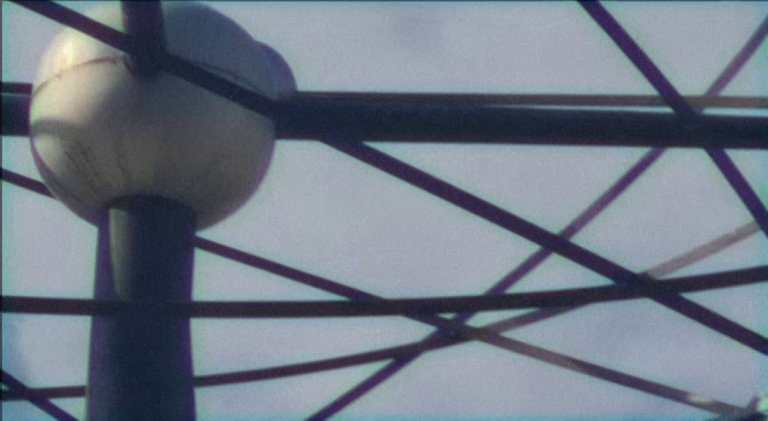
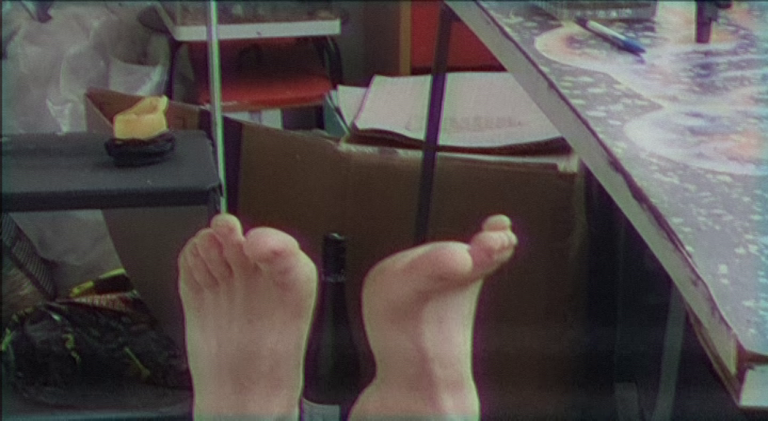
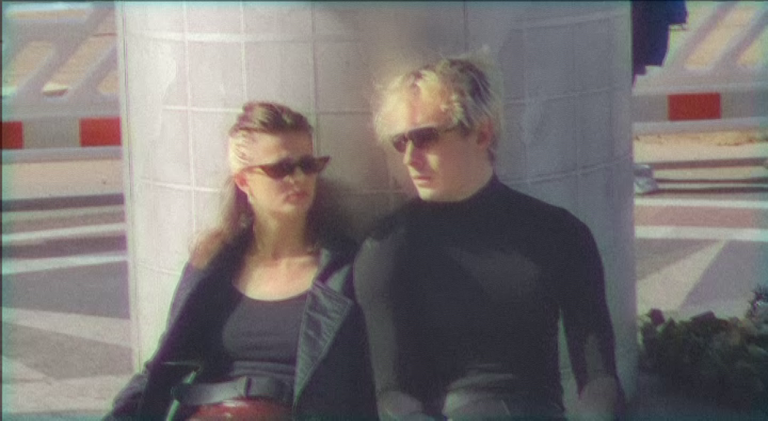
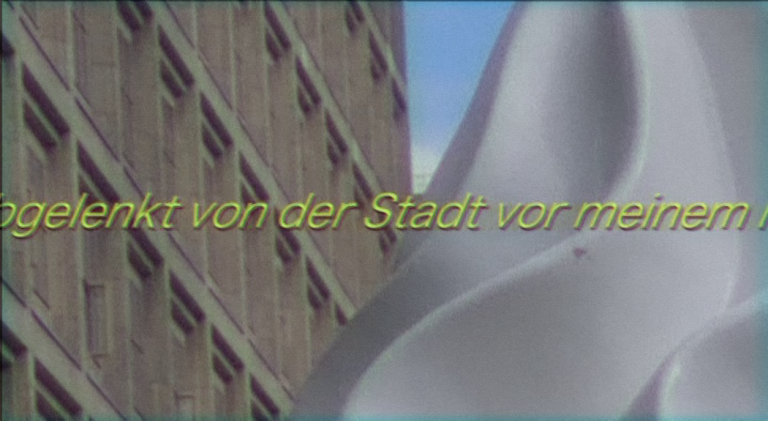
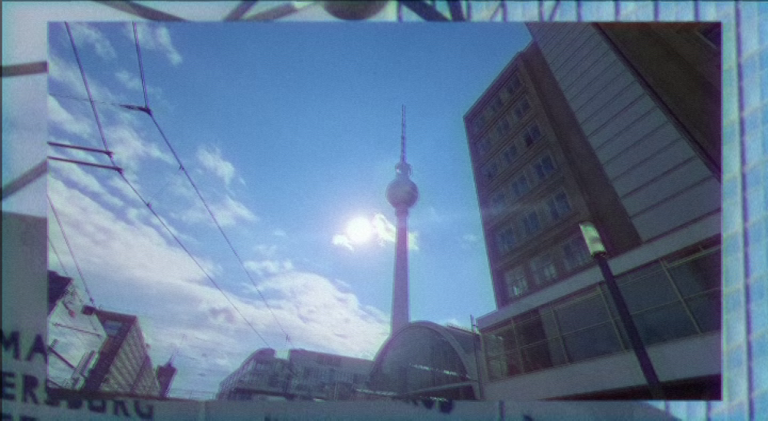
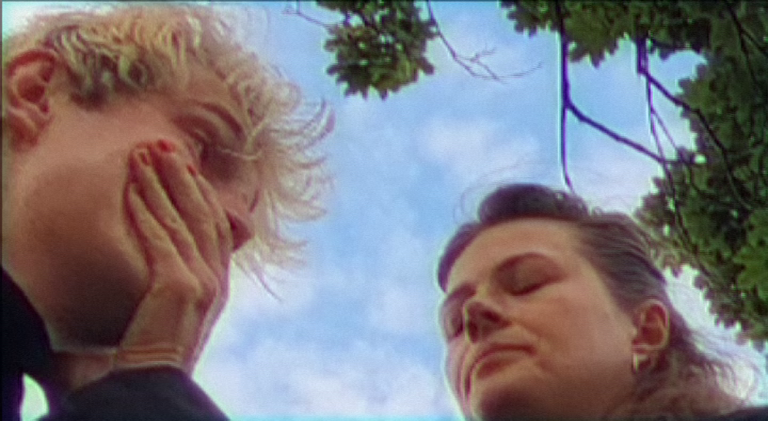
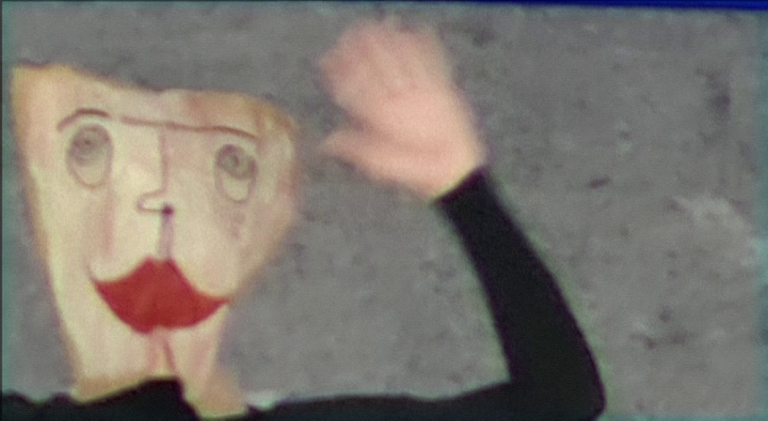
Text: ULRICHSundGROSCHEN
Darsteller:innen: Linda Beton & Franziskus Claus
Sound: Emma Ch. Ulrich
Camera and editing: Katharina Grosch
performances
NEVER SOLO
Performance by Nina & Karimy Kollektiv
„Nina (er.keine Pronomen.they.them.deren) ist der künstlerisch agierende Part von Nina & Karimy Kollektiv, deren live Regie Multimedia Performances Gelegenheit geben die aktuellen Prozesse öffentlich zu machen. NEVER SOLO begegnet Themen wie psychische Zustände, Rausch, Erinnerung, Künstlerische Visionen, PornoGrafiken, entwirft eigene Phantasie dazu und gibt den Anwesenden Raum anstatt eine voyeuristische Position einzunehmen, ohne dabei einen formal interaktiven Charakter zu verfolgen. Die Besuchenden sind eingeladen eigene Prozesse während der Performance mitzuleben und diese Prozesse als bewusste Momente mit in den Alltag zu nehmen. Ninas Arbeiten sind öffentliche Prozesse, behalten sich vor nicht fertig zu werden und sich sowohl inhaltlich als auch formal zu verändern und zu widersprechen.
Nina Karimy's research work pornoGRAFIK is supported by #takeheart Fonds Darstellende Künste. NEVER SOLO is a research stopover where Nina artistically takes stock between past, presence and future.
A performance by and with Nina & Karimy Kollektiv
Artistic advice:
DOore Antrie, Sophia Hankings-Evans, Mario Högemann, Kapi Kapinga Grab, Christin Høegsberg Pinciuc
Dedicated to: all my lovers„
Nina Karimy ist ein:e kurdische nichtbinäre dicke able-bodied Künstler:in. Nina arbeitet als Schauspieler:in, Performer:in, Autor:in, Dramaturg:in und Filmemacher:in, gründete 2018 das Nina&Karimy Kollektiv, spielte auf Festivals u.a. Zürcher Theaterspektakel und schrieb Theaterstücke wie QWEENDOM -mit Sophia Hankings-Evans- und UNDER CONTROL.
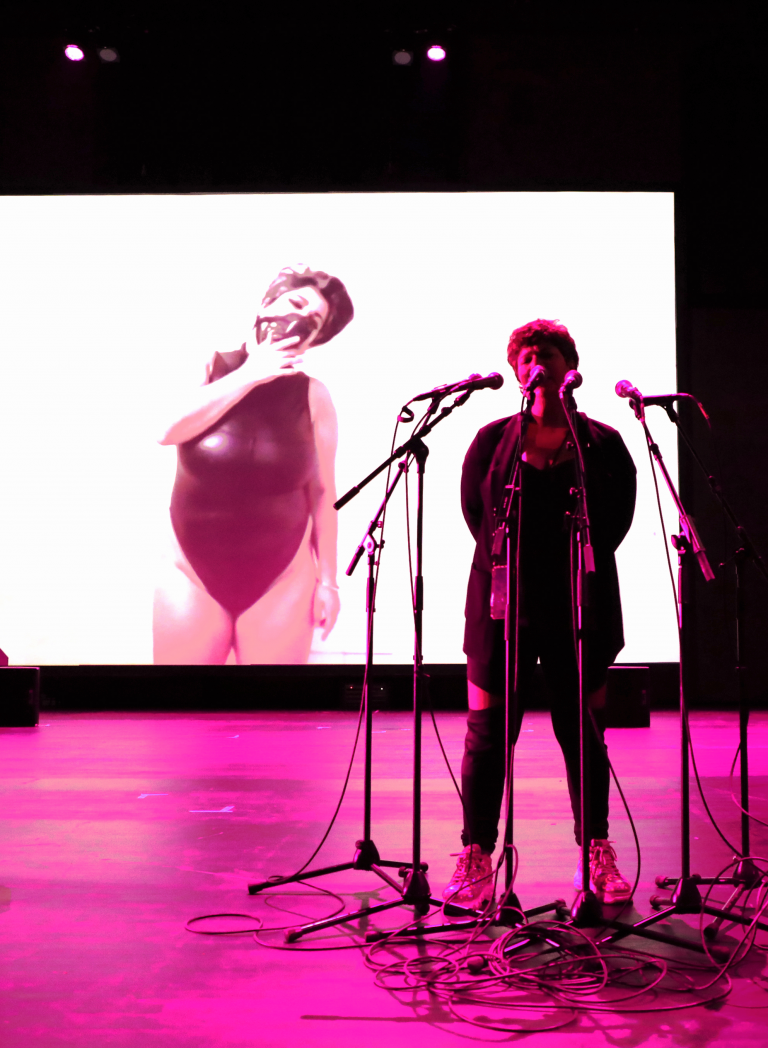
Europroblems: To pee or not to pee?
Performance by Putasagrada
„A show/performance/stage call it whatever you want to call, you get to choose :). Putasagrada is the Brazil-Centric queen of Europe who came to crush, kill and destroy the so called white, normative cisgender standards of womanhood. With rage and a little bit of Samba dance on the tip of her toes, she is revolutionary. This show/performance needs the audience as part of the people who are willing to transform the world. However, it is not a welcoming space if you don't behave under Putasagradas circumstances. Everything to be performed is about exposing natural body fluids, colonizing europeans with brasilian culture, embracing bodies and sharing a space to be free for a special amount of time.“
São Paulo, Brasil, when the city was in chaos and people needed a superstarherosexualamazingwoman, from a pile of gold. Her professional life has consisted of shining in dance clubs, collecting menstrual blood to water plants, dancing brasilian funk and crafting against Bolsonaro’s existence.
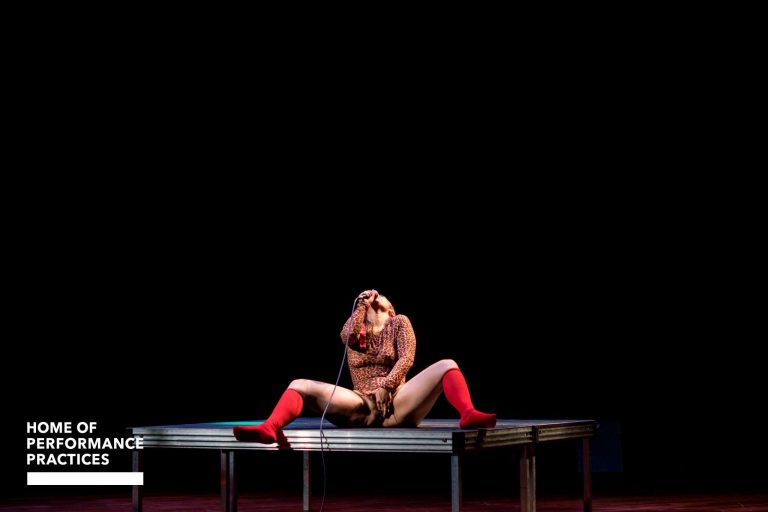
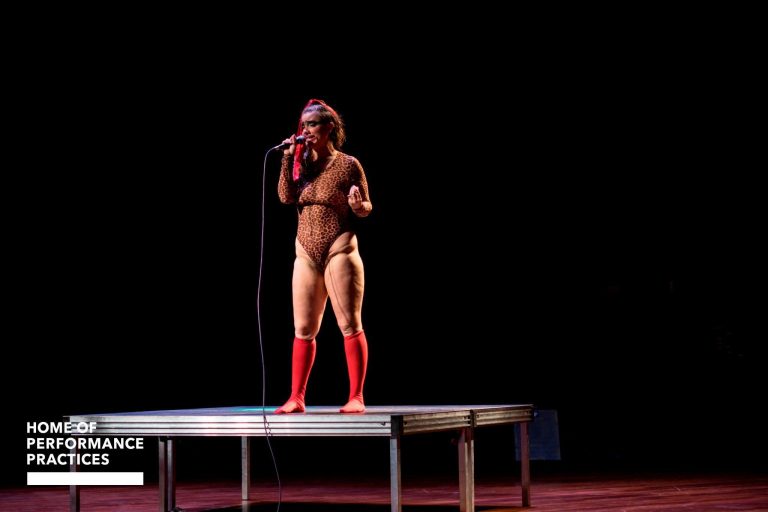
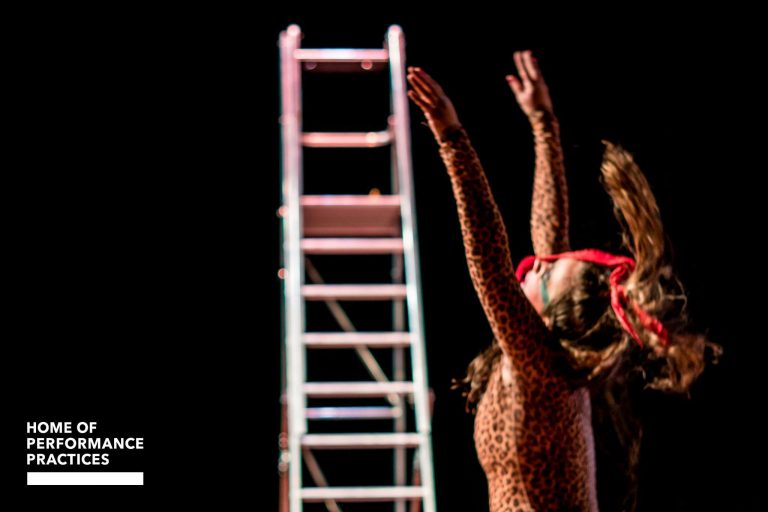
credits:
Fenia Kotsopoulou and Pavlos Koutouriotis
installation art
1984 is now
Installation art by Jafar Hejazi
„Ein Performer geht mit einem Wagen in die Öffentlichkeit wie bei einer Raree-Show (iranischer Shahre-Farang). Er lädt die Leute ein, 360-Grad-Videos auf einem VR-Headset anzuschauen und nimmt sie mit auf eine Rundfahrt.
In VR, there are some real-life narratives from various locations in Tehran, Iran. The central theme of all immersive videos is the younger generation's sorrow in Iran. For instance, a girl who got pregnant by her boyfriend narrates the story of abortion, prohibited in the Iranian legal system.
Die ortsbezogenen 360-Grad-Videos sind via Karten-Standorte auch im Internet verfügbar und können so von einem Online-Publikum angesehen werden.“
Jafar Hejazi is an interdisciplinary artist who has a technology and performing arts background. He has experience using the internet and some gadgets, such as VR headsets, to develop engaging artistic projects. Jafar, as an artist, experienced participating in the most important international art festivals in his homeland, like Fadjr and IIUTF.
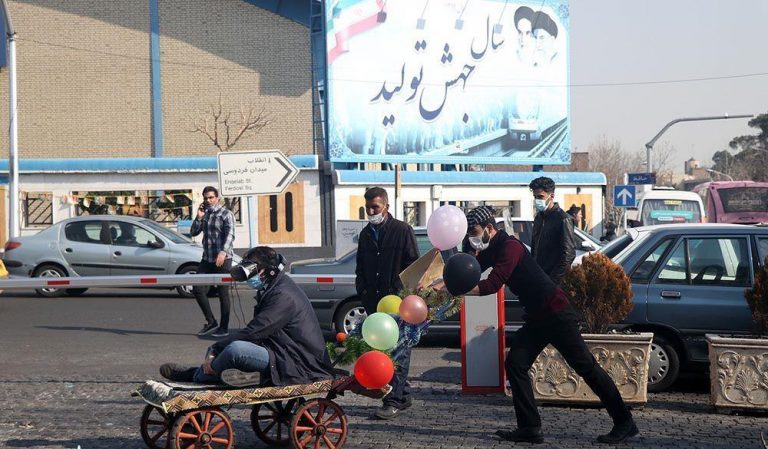
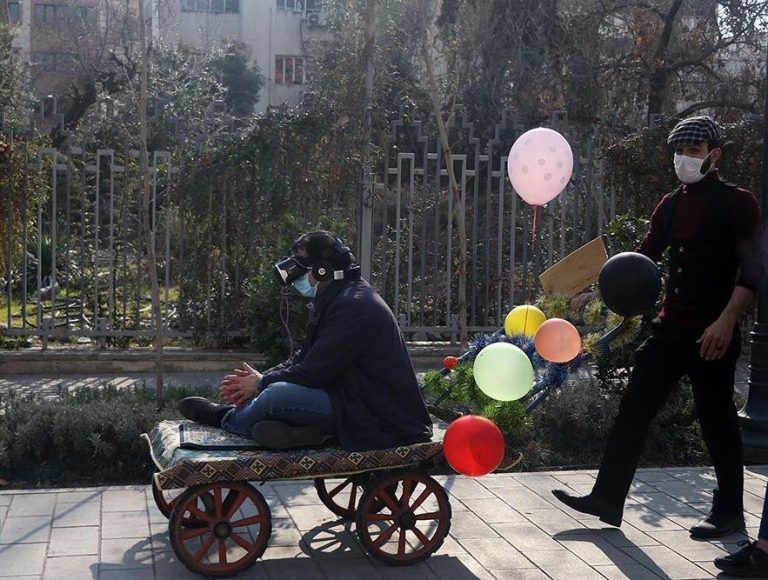
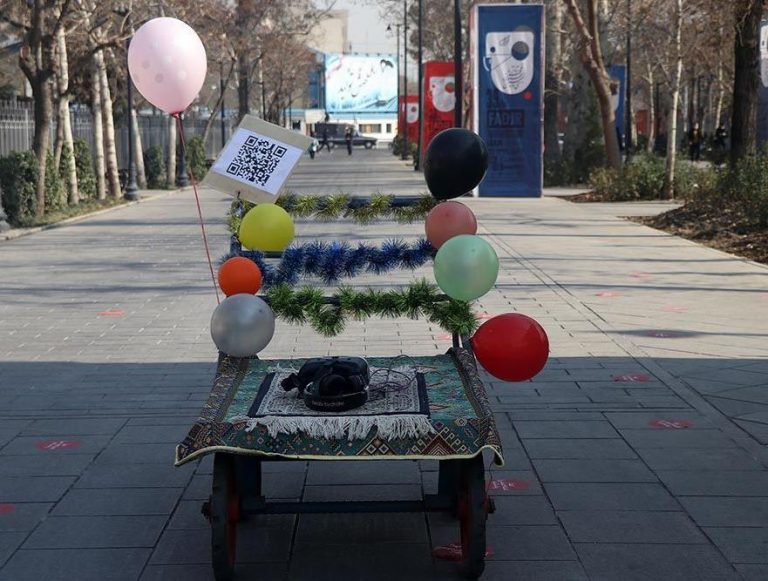
Performer: Saeed Jamshidi, Parisa Sanaatkar, Shabnam Dadkhah, Amirhosein Fekri, Asma Anvarinezhad, AmirAli Pariz
Directors assistant: AmirAli Pariz
Music: Nima Amin
Graphics: Saeed Rezvani
FALLA VR – The Exhibition
Installation art by Julia B. Laperrière
„In Falla, choreographer Julia B. Laperrière and guitarist Pia Achternkamp explore the transformative and empowering potential of the strap-on dildo for new images of female sexuality. Falla VR – The Exhibition invites the audience to immerse themselves in a dance performance through an intimate virtual reality experience. The walk-through installation - a surreal, immersive and bodily landscape that can be experienced visually, acoustically and physically - was designed in collaboration with visual artist Simone Kessler. Falla VR – The Exhibition invites visitors to linger and equally offers space for individual experiences and encounters.“
Julia B. Laperrière is a Canadian artist navigating between Berlin, Montpellier and Montreal. She holds an MA in choreography from Master Exerce at ICI-CCN Montpellier and is interested in gender, sexuality, new intimacies and dangerous dances. Her latest pieces have been presented in Germany, Canada, Norway, Italy and France.
CONCEPT/CHOREOGRAPHY/PERFORMANCE: Julia B. Laperrière
MUSIC/PERFORMANCE: Pia Achternkamp
INSTALLATION: Simone Kessler
ASSISTANCE INSTALLATION: Ines Könitz, Meller Ehlert
FILM: Jascha Viehstädt
DRAMATURGY: Siegmar Zacharias
PRODUCTION: Florentine Emigholz, Micaela Kühn
LIGHT/TECHNICAL EQUIPMENT: Marek Lamprecht, Josephine Mielke
The house that shadows built
Installation art by Zuza Banasinska
„The Hollywood studio system is a corporate world-making machine with almost limitless possibilities, yet as its uttermost goal is capital itself, it tends to perpetuate and repeat similarly structured narratives. I am interested in how this construct, which effectively produces the real, can be overtaken in order to generate stories that are non-commodified and non-hierarchical.
The house that shadows built ist eine 3-Kanal-Videoinstallation, die eine Studiotour durch ein fiktives Filmstudio darstellt und von einer Green-Screen-Figur geführt wird. Ich verwende den Chroma-Key-Bildschirm als Werkzeug der Bildmigration und als Verbindungspunkt zwischen Land, Maschine, Körper und dem Virtuellen. Indem ich die Möglichkeiten erforsche, wer/was ein „Protagonist“ sein kann, demontiere ich scheinbar festgelegte Identitäten, sowohl des Subjekts als auch seines Hintergrunds.“
Zuza Banasińska (PL, 1994) is an artist making video-based environments, where virtual and real elements are hybridised beyond distinction in order to generate narratives and spaces that are unfixed and non-hierarchical. She studied at the Academy of Fine Arts in Cracow, the Universität der Künste in Berlin and Sandberg Instituut in Amsterdam.
Directing, screenplay, video and sound editing, animation: Zuza Banasińska
Music: Agata Kneć
Vocals: Nela Maciejewska
Graphic design: Renata Motyka
Performance: Elżbieta Sadowska, Marta Rees, Roshelle Fong
Special Thanks: Rob Schroeder, Metahaven, Beri Shalmashi, Kate Cooper, Rana Hamadeh, Jeanne Vrastor
It’s gonna be a long time before I go into the woods, just like that, for a walk.
Installation art by Joanna Zabielska
„Als ob jemand fragen würde, ob wir es hier mit einer Gut-gegen-Böse-Situation zu tun haben. Nun, ich denke, so könnte man es nennen.“
Presence on the border - literally and psychologically - writes extremely dramatic scenarios.
It’s gonna be a long time before I go into the woods, just like that, for a walk. explores the human condition on the edge of life and death, and questions the role of technology in a migrant crisis. It aims to investigate the neutrality and the lack of empathy coming with the inability to imagine the mental and physical state of a person who has spent a week in the woods in minus temperature. To better understand the matted testimonies of ngos and volunteers working on the border, poetry of Wisława Szymborska and Khalil Gibran and philosophical texts of Leszek Kołakowski, are messaged on Telegram and projected in the space.
Joanna Zabielska works at the intersection of art, design, architecture and urban planning, approaching the social and spatial issues of urban transformation. Using various media - from VR installations, inflatable sculptures to cooking performances - she developed participatory, site-specific projects together with the local community.
3D-Visuals, edited video, sound: Joanna Zabielska
Sound, Arabic poem: Bilal Alame
Interview, short video clips: oko.press
throne wars
Installation art by Sherie Sitauze
„Ein laufendes Projekt, das Fragmente einer Geschichte zusammensetzt, die nur spärlich dokumentiert ist. Es schlägt eine Verflachung der Zeit vor und befasst sich mit aktuellen Konflikten in kulturellen Angelegenheiten im südlichen Afrika. Es ist eine Erforschung der Mythologien und Erzählungen der Venda mit Fokus auf einer weißen Python-Gottheit und spekuliert insbesondere über die Möglichkeit einer alternativen Zukunft, in der eine Venda-Prinzessin, die seit 2010 um den Thron kämpft, in einem Test von Nwali verzehrt wird, überlebt und infolgedessen die Häuptlingswürde übernimmt. Diese Zukünfte entfalten sich während der Soundtrack von zwei Venda-Frauen geformt wird, die sich in einem intimen Dialog über traditionelle Mythen und Geschichten austauschen. Sie versuchen, ihre Geschichten der Diaspora und der Vertreibung zu reflektieren und drücken ihre Sehnsucht und ihr Gefühl der Zugehörigkeit nach einem „Zuhause“ aus.“
b. Bulawayo, Zimbabwe. lives/works in London. MFA Fine Art Goldsmiths, University of London (2021). Sherie’s practice deals primarily with moving image, collage, installation and is heavily embedded in, and refers to quantum physics, metaphysics, pre-colonial myths and narratives alongside post-colonial theories and concepts.
Whatcha Gonna Do (When They Come for You)
Installation art by Jonas Beile
„In this installation the system of Google Street View is used as a medium of a scenic staging. The scenario of ca. 60 panoramic images was realized with a group of voluntary performers. Its plot aims at the question of anonymity in today’s digital public space. The resulting images have been placed as a virtual tour on Google’s Street View platform and can be viewed online on a tablet PC in the exhibition. A documentary film of this production is shown as an accompanying projection. The tension between fictional and documentary elements is emphasized by the fact that the film’s soundtrack features interviews with people who are themselves in the focus of surveillance and for whom anonymity is a vital factor for survival.“
Jonas Beiles is interested in the transformations of digital capitalism, especially in the field of labour and social relations. He often uses the infrastructure of virtual platforms as a playing field for artistic experiments. His cinematic works mix documentary and fictional elements.
Cast: Dalia Marmo, Abdulsamed Brahovic, Hamda Ferchichi, Eveline, Stefan, Estelle & Florient Blume
Camera: Stefan Tschumi
Unit manager: Sugano Matsusaki
With the support of DOGO Residenz für Neue Kunst
